Designing the Perfect Rock Garden for your Outdoor Space
Dare to go bold! If you’ve previously shied away from landscaping with rocks then prepare to be inspired. Done right, rocks are testament to nature’s artistry as crafting with rocks can create a truly breathtaking outdoor impact.
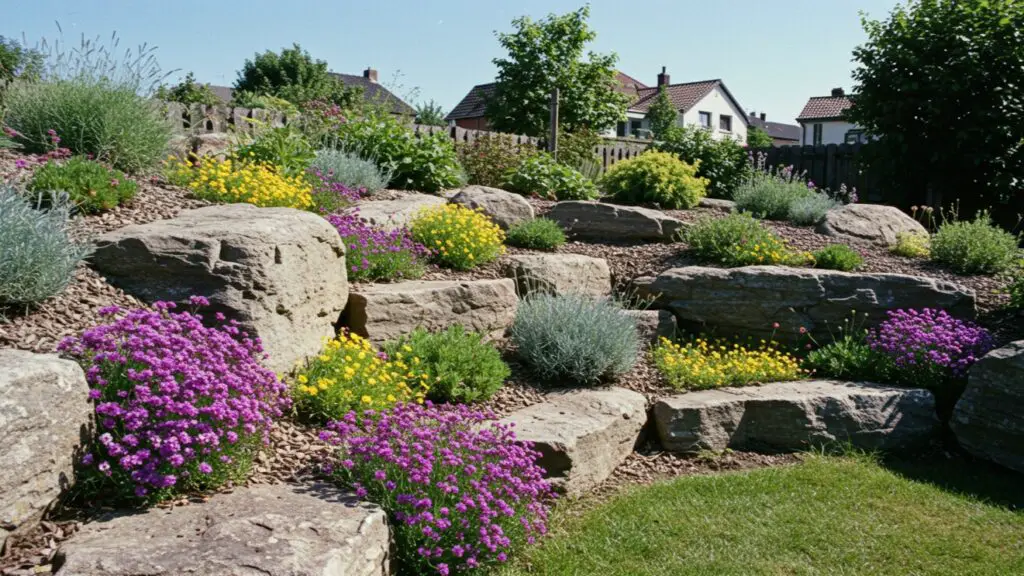
Land scaping with rocks and creating rock gardens have become super popular. Something we are asked to create all the time! And it’s easy to see why. They bring a stylish, natural feel to any yard. Plus, they are surprisingly practical. These gardens offer amazing versatility. They require low upkeep. Their aesthetic value is undeniable. This article will give you cool ideas. It offers practical help for creating your own amazing large-scale outdoor rock garden. Prepare to be inspired.
Understanding Rock Gardens in Landscape Design
So, what exactly is a rock garden? It’s a garden space where rocks and stones are the main features. They are carefully arranged. Plants are chosen to complement these stony elements.
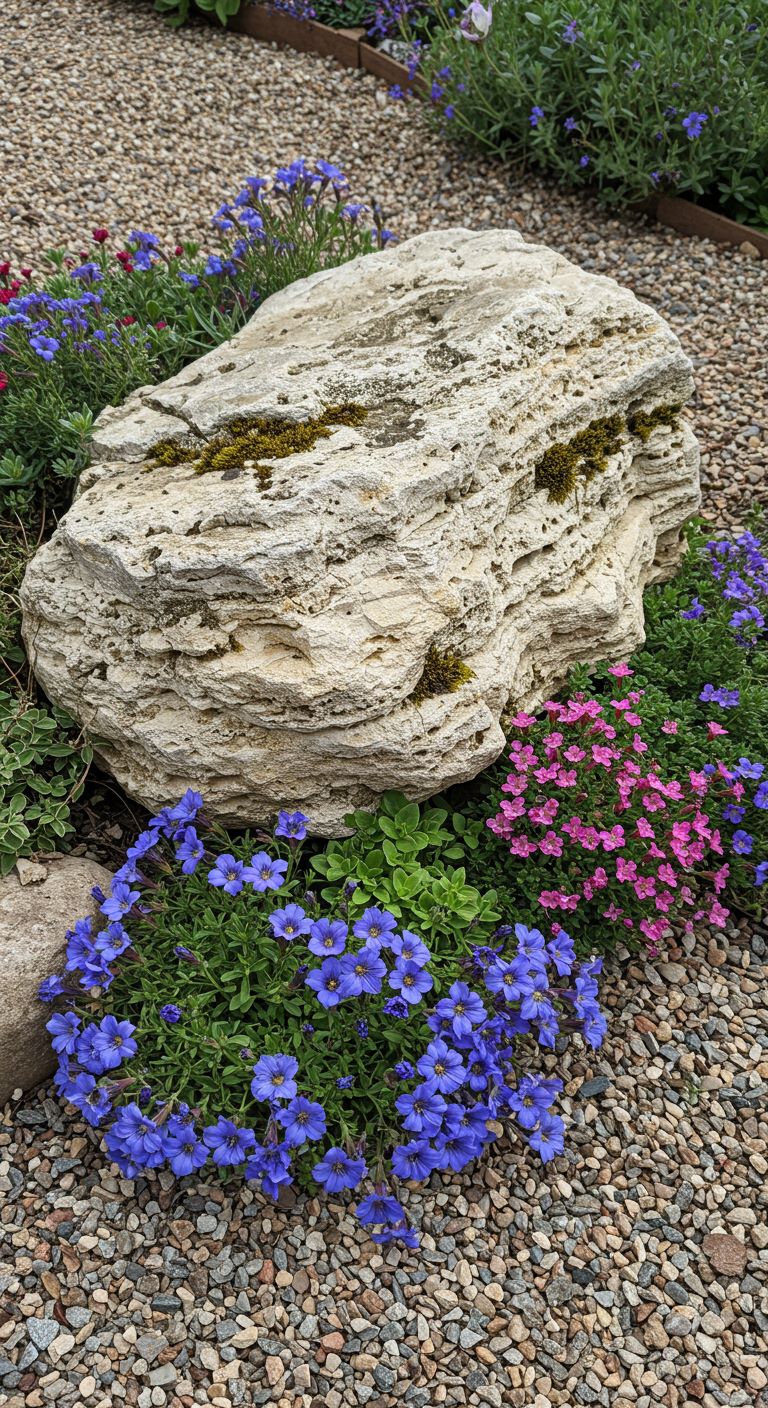
Many people confuse rock gardens with hardscaping. Hardscaping involves man-made features. Think patios, pathways, or retaining walls. A rock garden, however, uses rocks more naturally. It aims to mimic mountain slopes or stony clearings. It’s about creating a habitat.
Using rocks in your garden has big advantages. Rocks are tough. They last a very long time. Sun, rain, snow – rocks can handle it all. And they don’t need much looking after. Forget constant watering or pruning that some other garden styles demand. Rocks offer fantastic aesthetic range too. They can fit a rustic country look. Or they can suit a sleek, modern design.
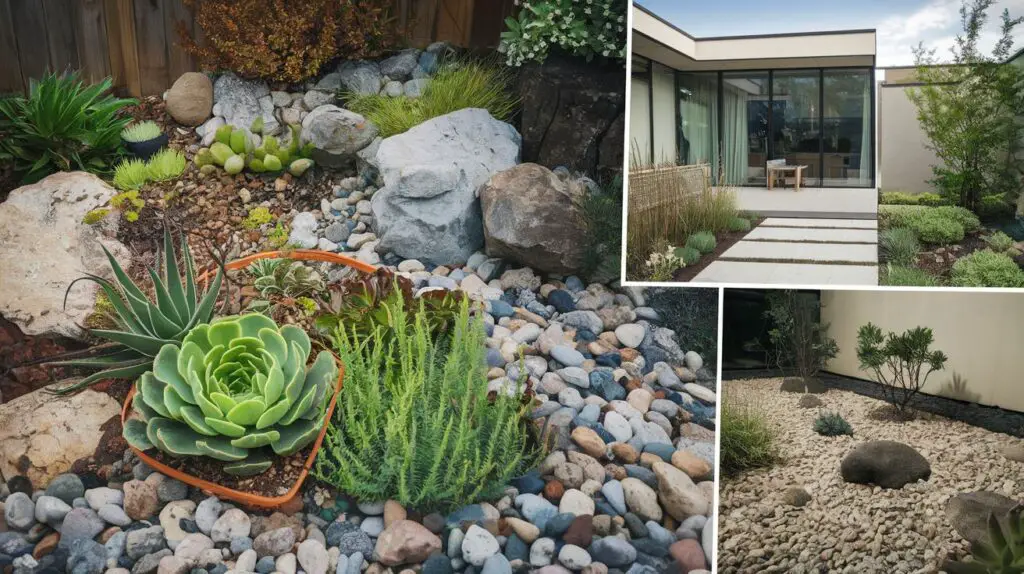
Essential Principles for Successful Rock Garden Design
Great rock garden design isn’t just about plopping down stones. Certain principles help create something truly special.
Balance and proportion are key. You need the right size of rocks. And the right number. Too few rocks can look lost. Too many can feel cluttered. Think about your whole garden space. Larger areas can handle bigger, bolder stones. Smaller spots need more modest selections.
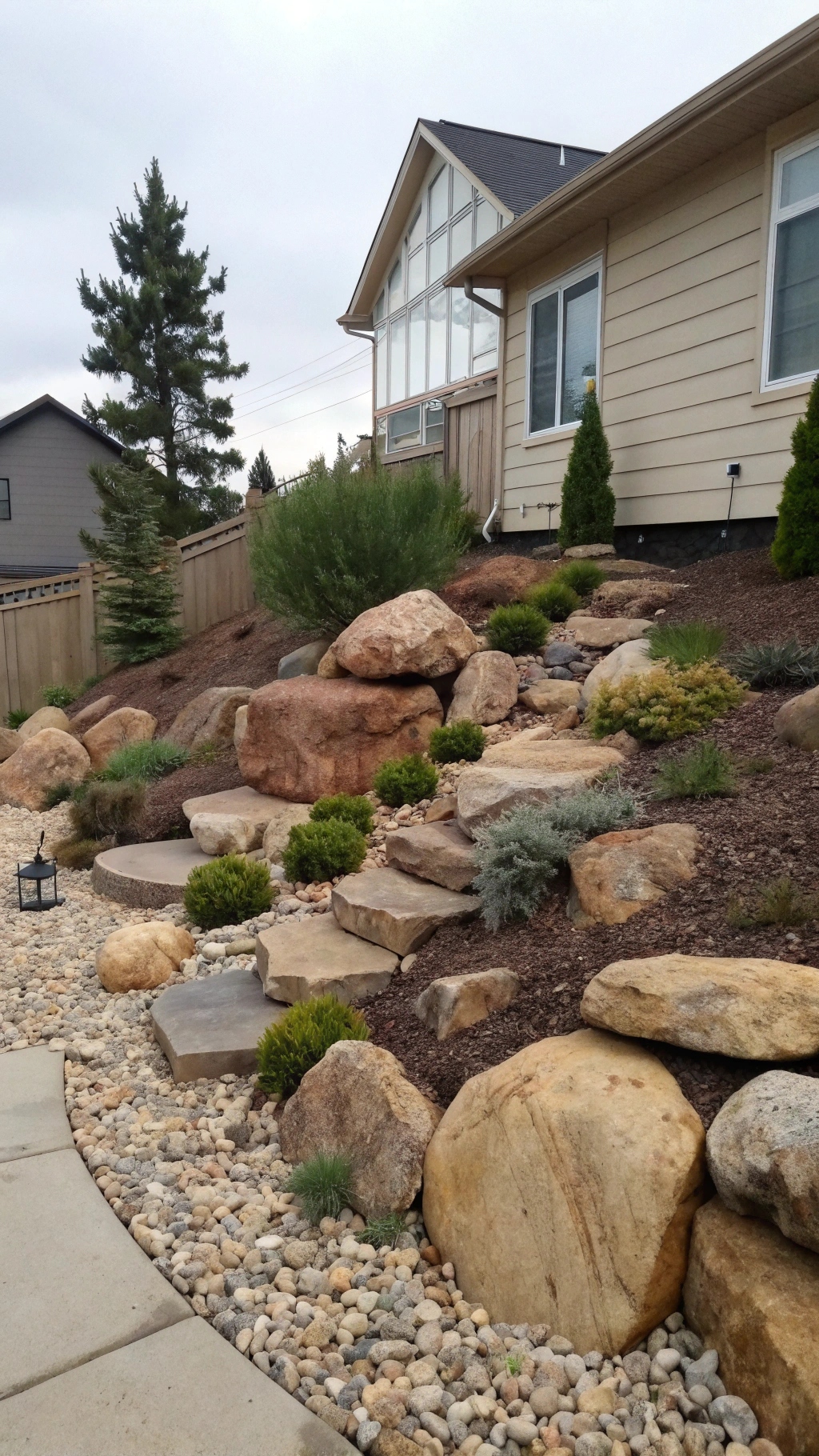
Next comes harmony and unity. Your rocks should feel like they belong. They need to match the plants you choose. And they should work with the rest of your yard. Aim for a cohesive look. A jumble of different rock types can look messy. Stick to one or two compatible kinds for a unified feel.
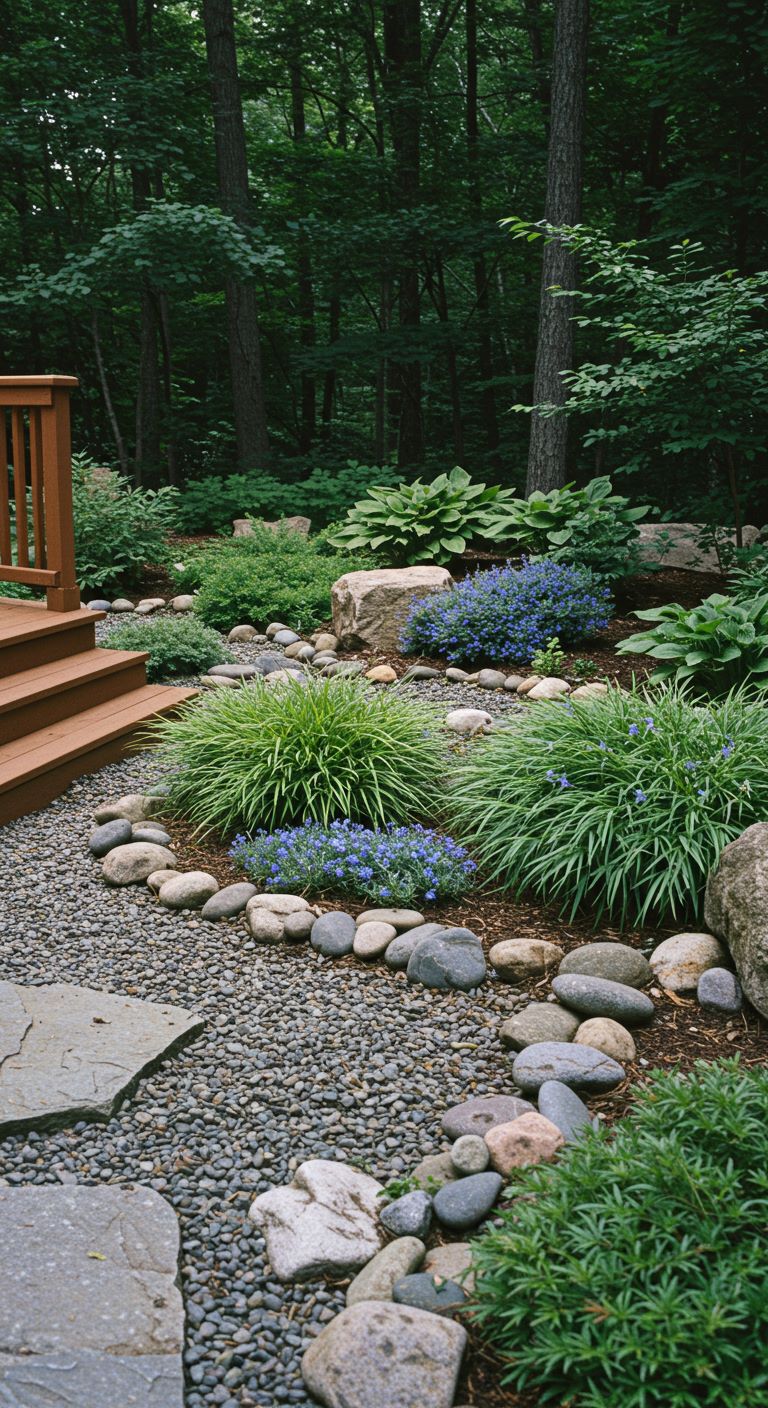
Don’t forget texture and contrast. Combining different surfaces adds interest. Imagine large, rough-textured boulders. Now pair them with delicate, feathery ferns. Or use smooth, rounded river stones alongside spiky yuccas. This play of textures makes your garden visually exciting. Fine gravel or sand can also provide contrast to larger stones.
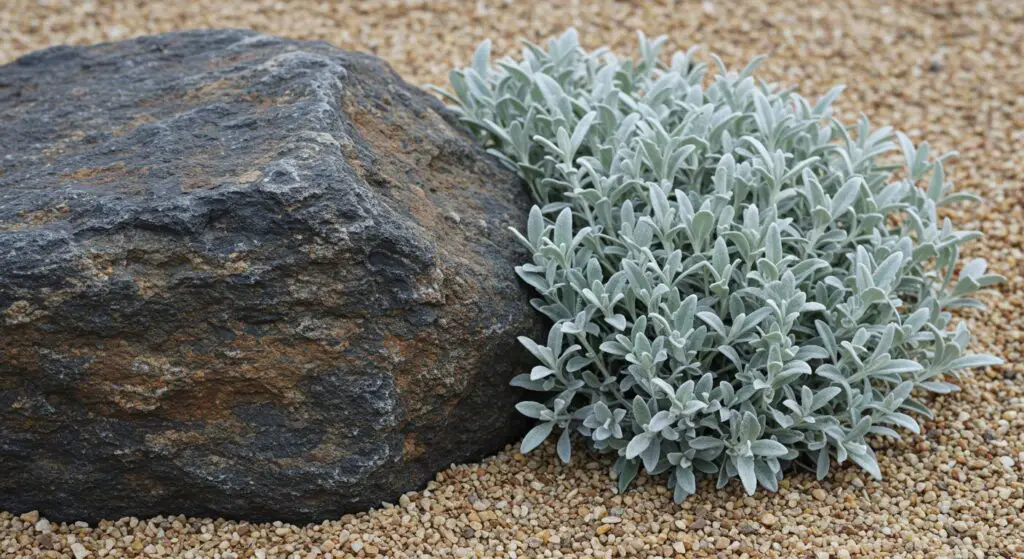
Finally, consider scale considerations. The size of your rocks should fit your garden’s overall dimensions. For a big, expansive yard, use large, impressive boulders. These create drama. They won’t get swallowed by the space. In a medium-sized garden, moderate rocks work best. And for small patios or tiny plots, smaller stones and pebbles are ideal. Keeping scale in mind ensures everything looks right.
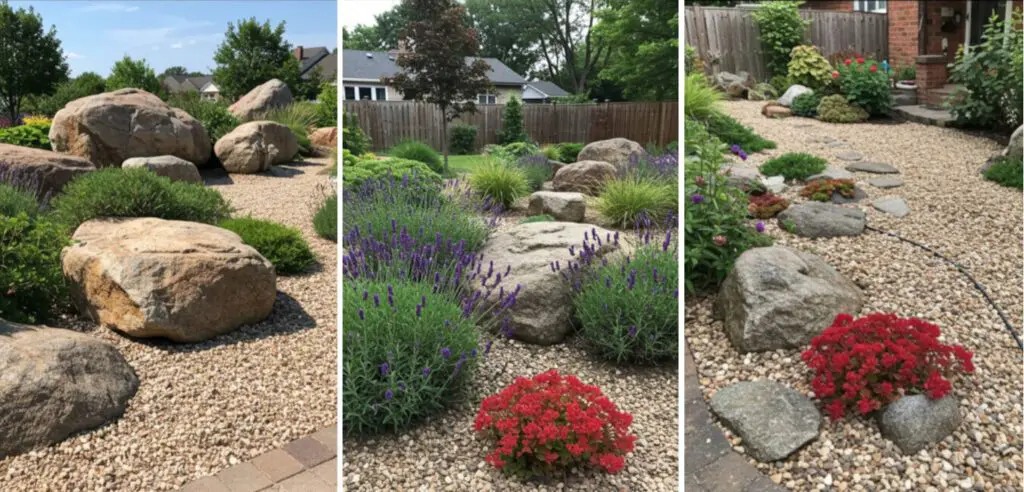
Inspiring Large-Scale Rock Garden Ideas
Big spaces offer grand opportunities. Large-scale rock gardens can transform your yard. They make a statement. Here are some ideas to get you thinking big.
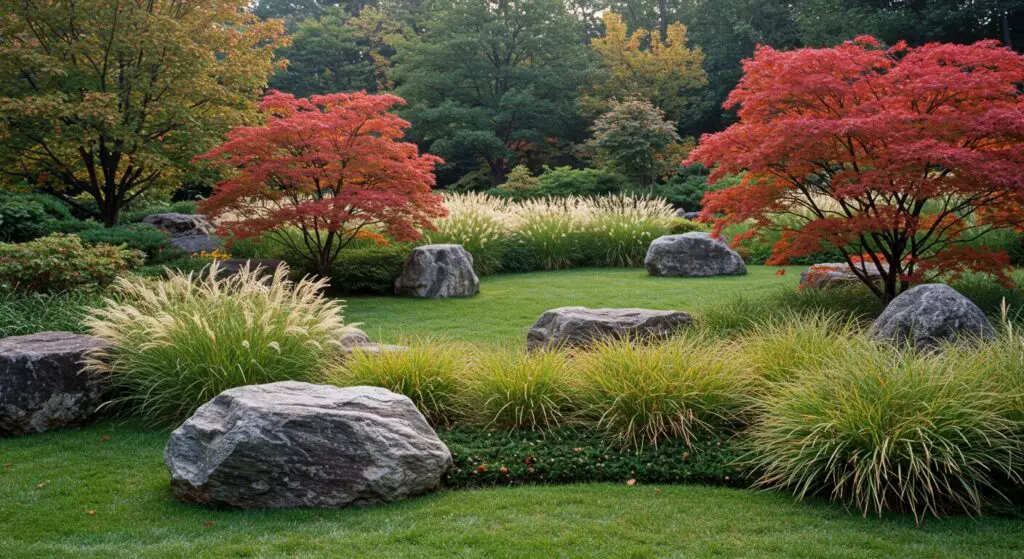
Dramatic Boulder Features
Using large boulders as focal points creates instant drama. These aren’t just stones; they are sculptures. Think of them as the stars of your garden show. One massive, interestingly shaped boulder can anchor an entire area. Or a small group can create a powerful centerpiece.
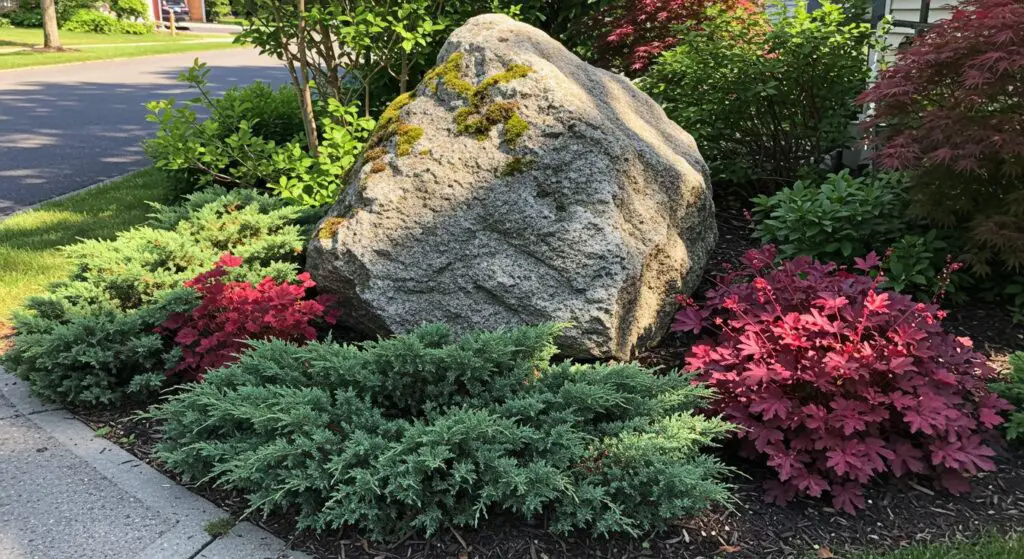
How you position substantial rocks matters greatly. Don’t just drop them anywhere. Consider sightlines from your house or patio. Tilt them slightly. Burying about one-third of a boulder makes it look naturally settled. And it adds stability. Group boulders in odd numbers, like threes or fives. It often looks more natural than even numbers.
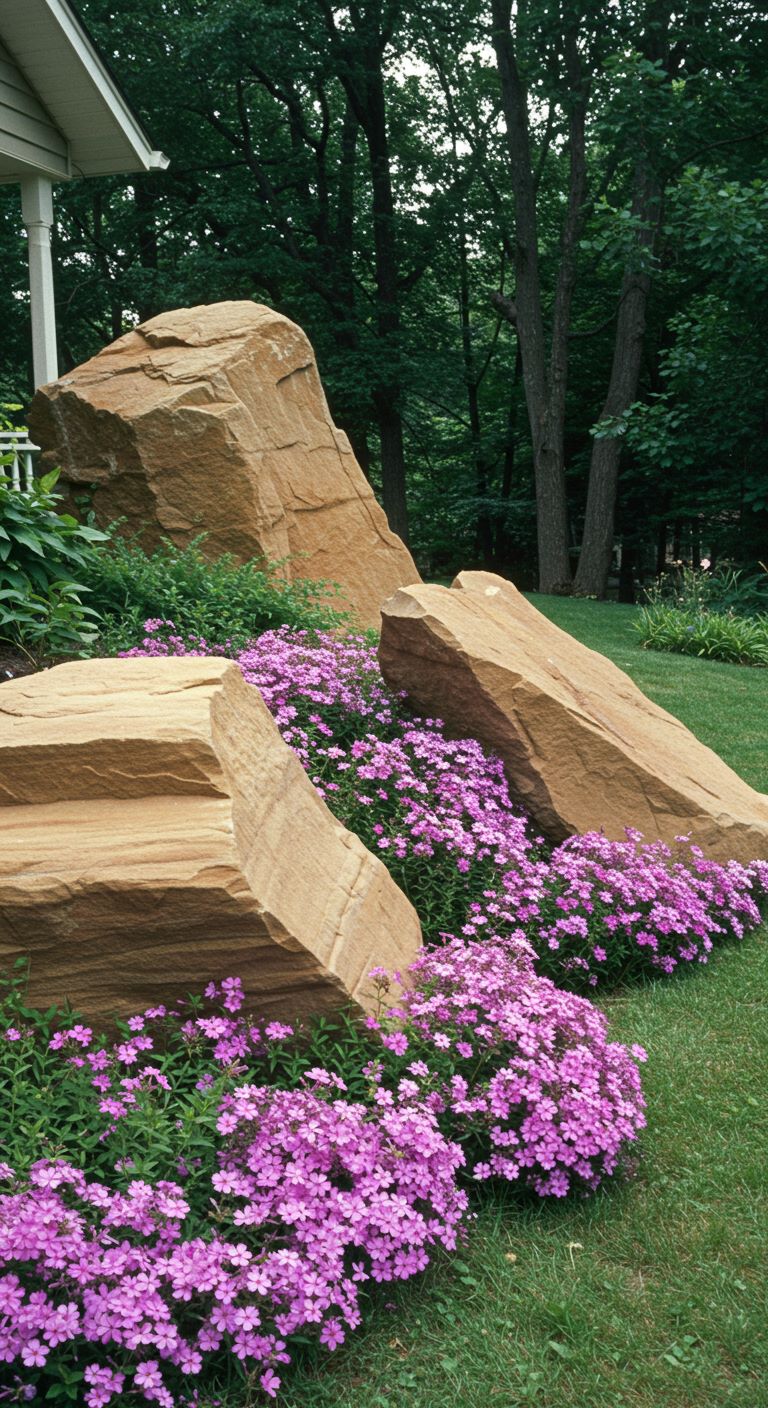
What plants go best with oversized rocks? Choose plants that complement, not compete. Low-growing groundcovers are excellent. Think creeping thyme or sedum. Dwarf conifers add year-round structure. Consider ornamental grasses. Their soft textures contrast beautifully with hard stone. And their movement adds life.
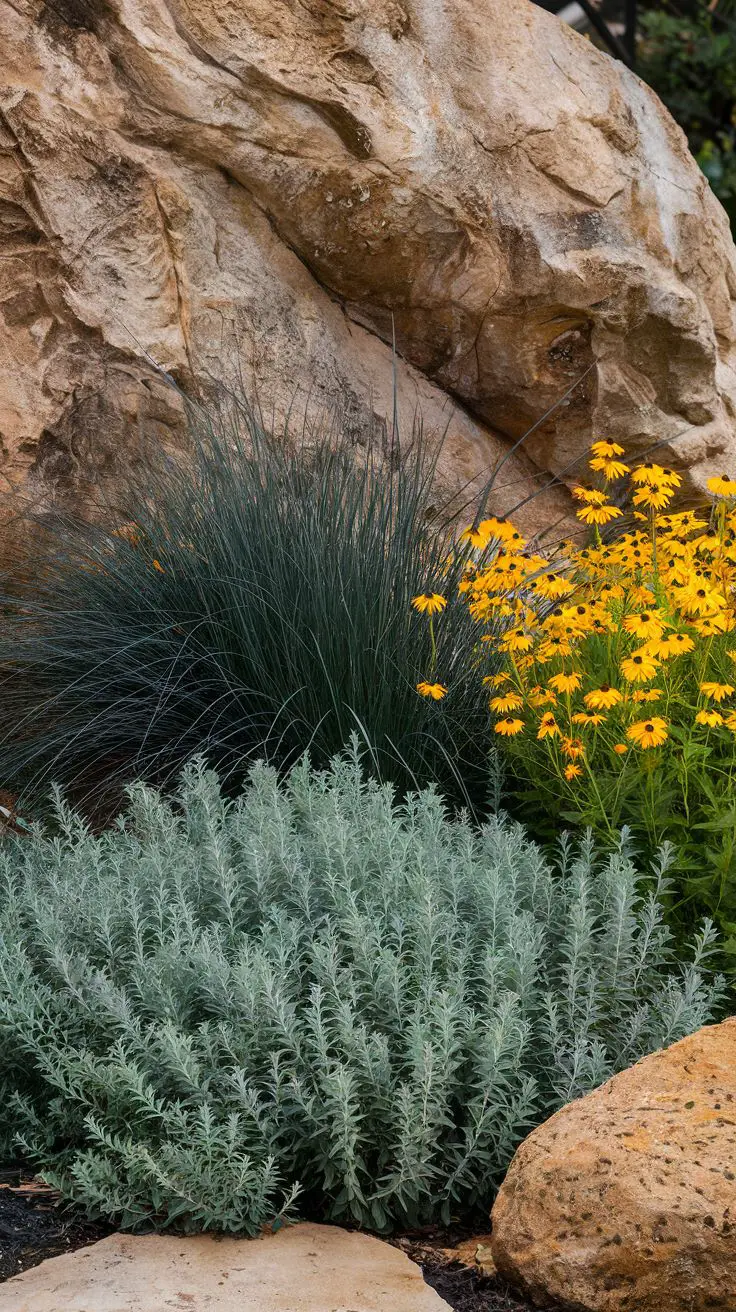
Tiered Rock Gardens
Creating height and dimension with tiered rock gardens is very effective. Stepped or layered rock formations add so much interest. They are perfect for slopes. But you can build them on flat ground too. Tiers allow for different planting pockets. Each level can showcase unique plants.
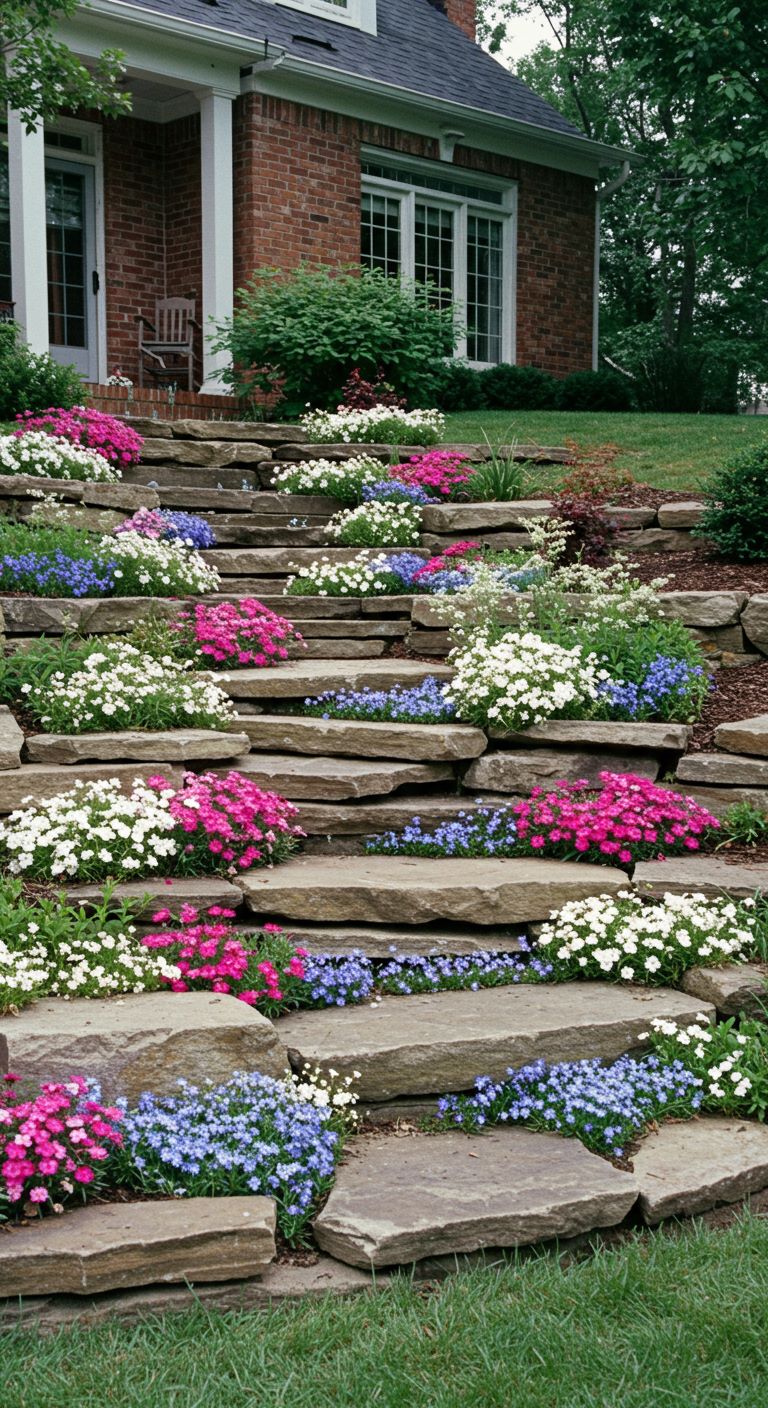
For arranging rocks and plants in a tiered design, start with the largest rocks at the base. These provide stability. Work your way up, using progressively smaller stones. Ensure each tier slants slightly back. This helps with drainage and stability. Plant in the crevices and on the flat areas of each tier.
Suitable plant choices for a cascading effect are plentiful. Look for plants that naturally spill or trail. Alyssum, with its honey-scented flowers, is a classic. Lobelia offers brilliant blues and purples. Many varieties of sedum and creeping phlox will happily tumble down rock faces. This creates a living waterfall of color.
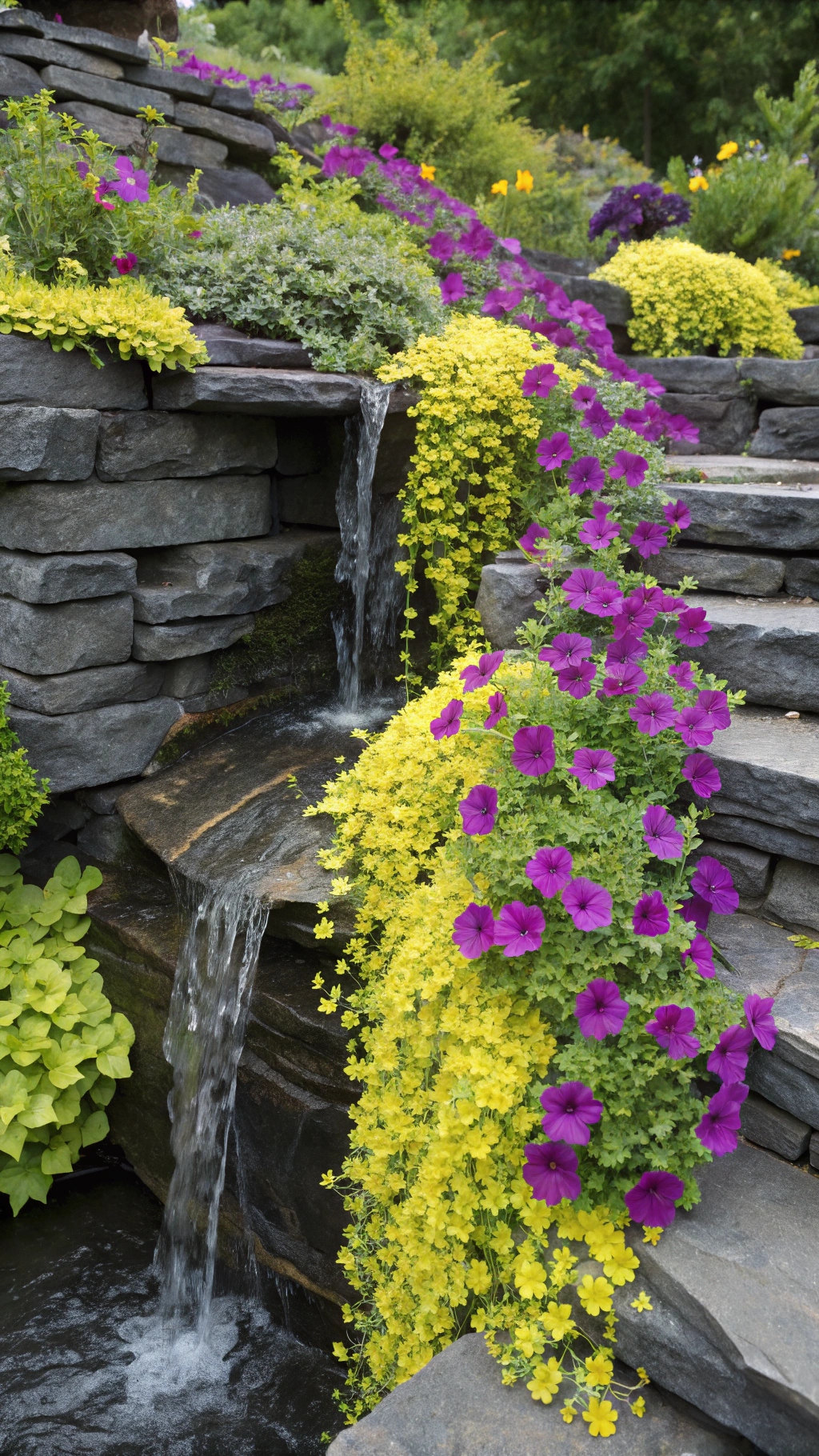
Naturalistic Rocky Stream Beds
Designing faux dry creek beds with rocks and gravel is a fantastic idea. These features suggest water. Even without actual H2O, they bring a sense of movement. And they look wonderfully natural. A dry creek bed can also help manage drainage issues. It cleverly channels rainwater.
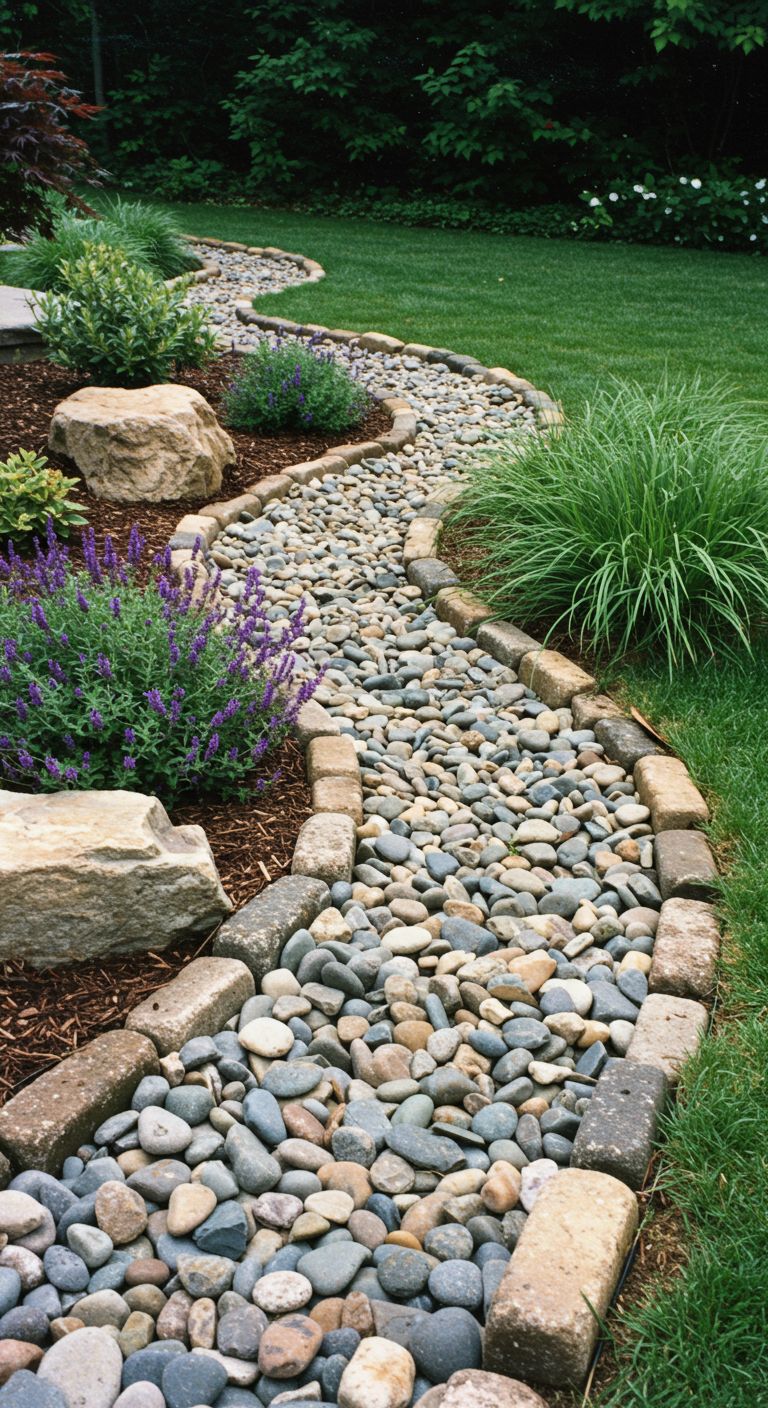
To mimic natural stream shapes, avoid straight lines. Gentle curves look much more realistic. Vary the width of your creek bed. Make it wider in some spots, narrower in others. Use larger rocks along the edges. Fill the center with smaller stones and gravel, just like a real stream.
Appropriate plants enhance the realism of the design. Choose plants that you might find near water. Hostas and ferns thrive in shadier spots along a dry creek. Ornamental grasses, like Japanese blood grass or blue fescue, look great. Consider moisture-loving irises if the area sometimes gets damp.
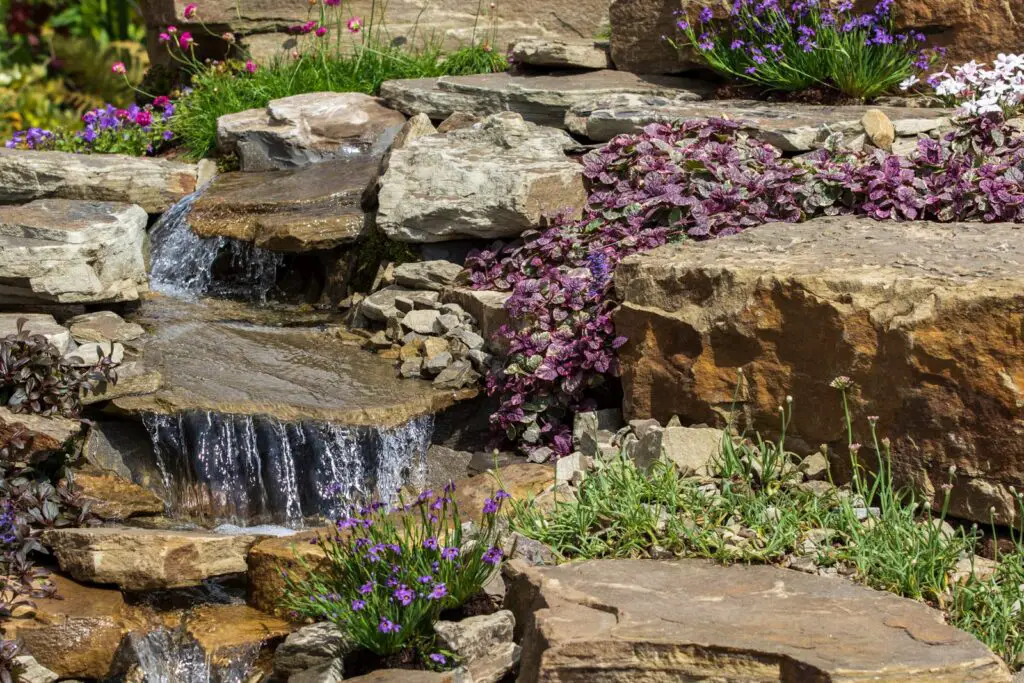
Effective Use of Landscaping Rocks
Choosing and placing rocks is an art. The right rocks, used well, make all the difference. They define your garden’s character.
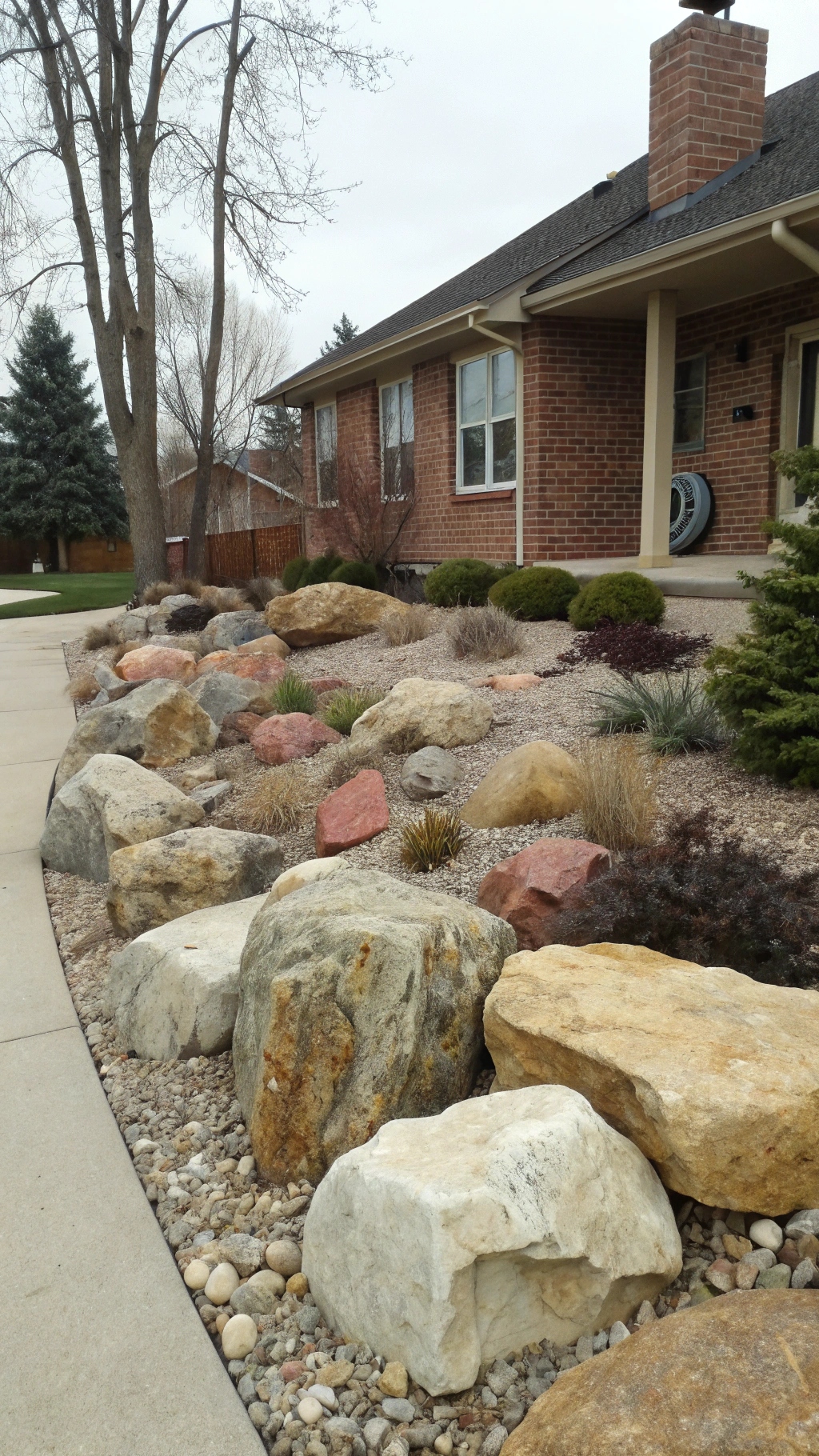
When selecting the right rock types, consider your local stone. It often looks most natural. And it can be cheaper. Limestone offers creamy whites and grays. Granite is very hard, often speckled, and comes in many colors. Sandstone has lovely earthy tones and a layered look. River rock is smooth and rounded, perfect for dry creek beds. Think about the overall color scheme of your house and garden. Choose rocks that harmonize.
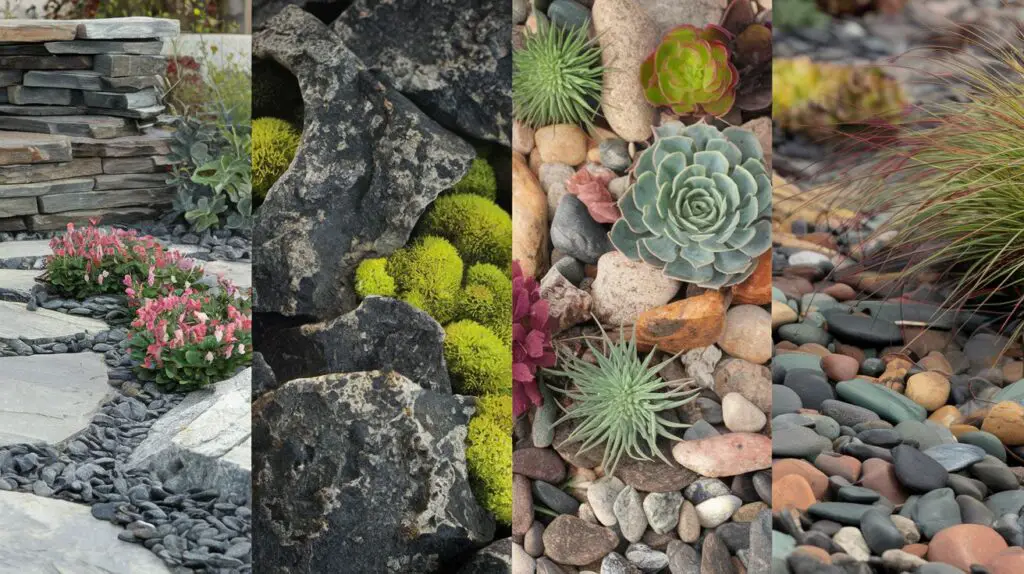
Placement strategies depend on your desired style. For a natural look, group rocks irregularly. Bury parts of them. Mimic how they appear in nature. For a modern, structured style, you might line them up. Or create geometric patterns. Avoid the “soldiers in a row” look unless it’s a very formal design. And always place larger rocks first. Then fill in with smaller ones.
Tips for sourcing affordable landscaping rocks can save you money. Look for local quarries or landscape suppliers. Sometimes, construction sites have excess rock they need to remove. Farmers clearing fields might offer stones cheaply. Don’t overlook recycled options. Broken concrete can be cleverly used, with the rough edges hidden. Always ask about delivery costs. Rocks are heavy!
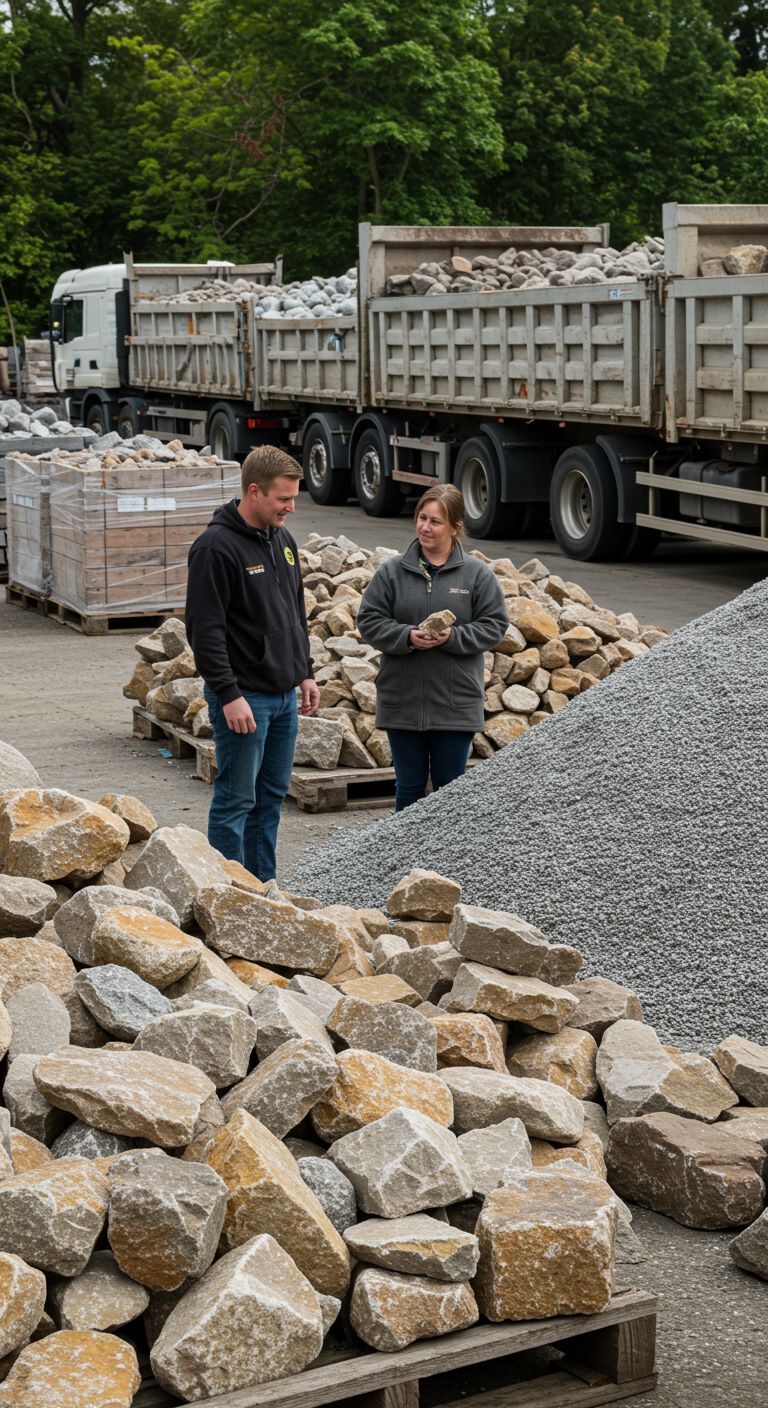
Outdoor Rock Garden Ideas: From Simple to Sophisticated
Rock gardens fit any skill level. And any taste. From easy beginner projects to more elaborate designs. There’s a rock garden for everyone.
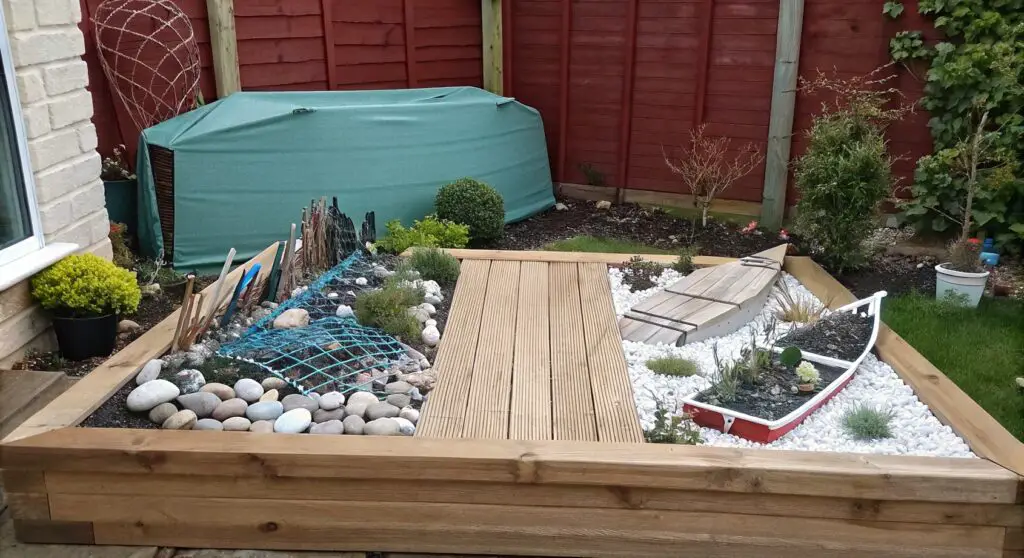
Simple Rock Gardens for Beginners
Starting with simple rock gardens is wise. Easy-to-follow layout designs with fewer elements are less daunting. You can always expand later. A small mound or a border along a path can be a great start. Focus on a few well-chosen rocks. And select easy-care plants.
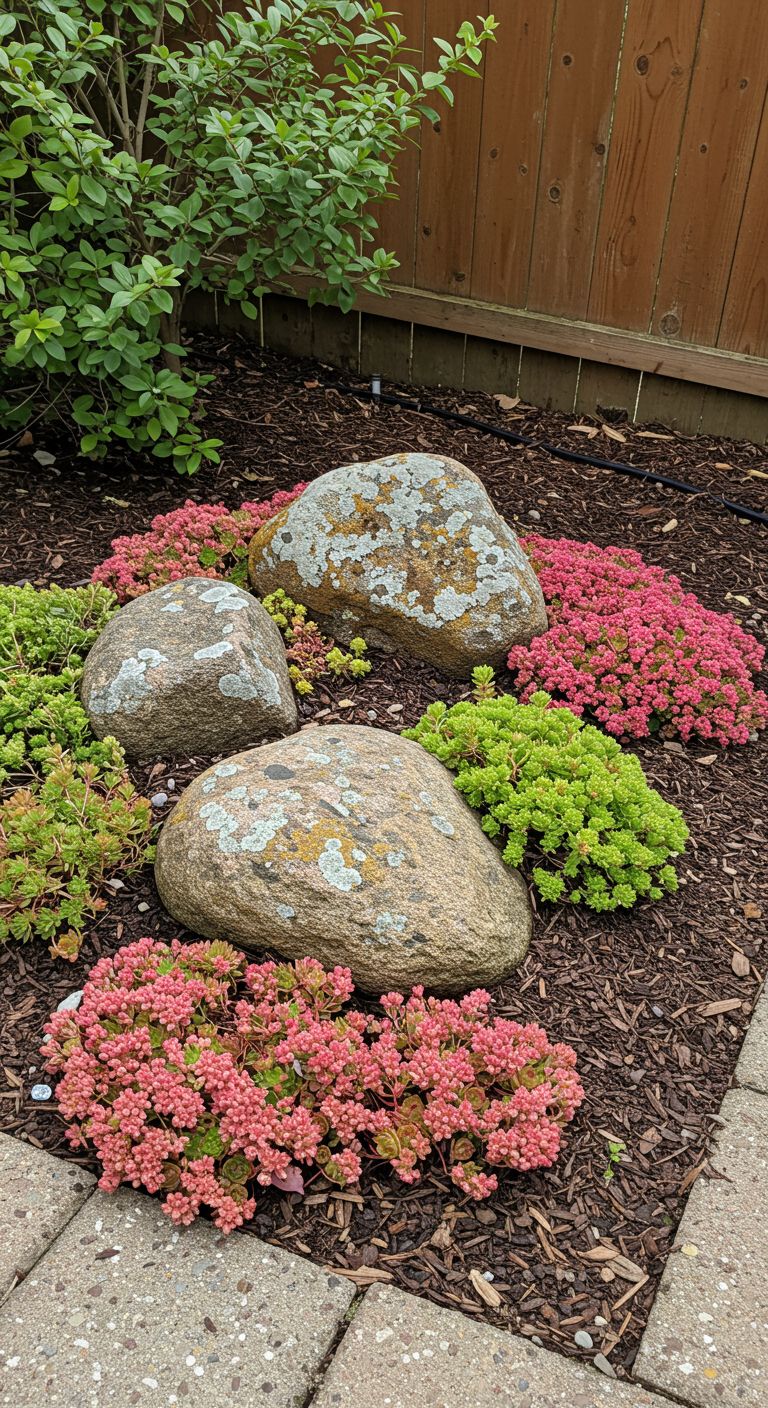
A step-by-step guide for quick installation helps. First, clear the area of weeds and grass. Next, place your largest rocks. Then add good draining soil around them. Finally, position your plants. Add a mulch of gravel or small pebbles. This helps keep weeds down. And it looks tidy.
Recommended hardy, low-maintenance plants are crucial for beginners. Sedums are champions. They come in many colors and forms. Creeping thyme is fragrant and tough. Sempervivums, or Hens and Chicks, are fascinating. And many small ornamental grasses need little care. Choose plants suited to your local climate.
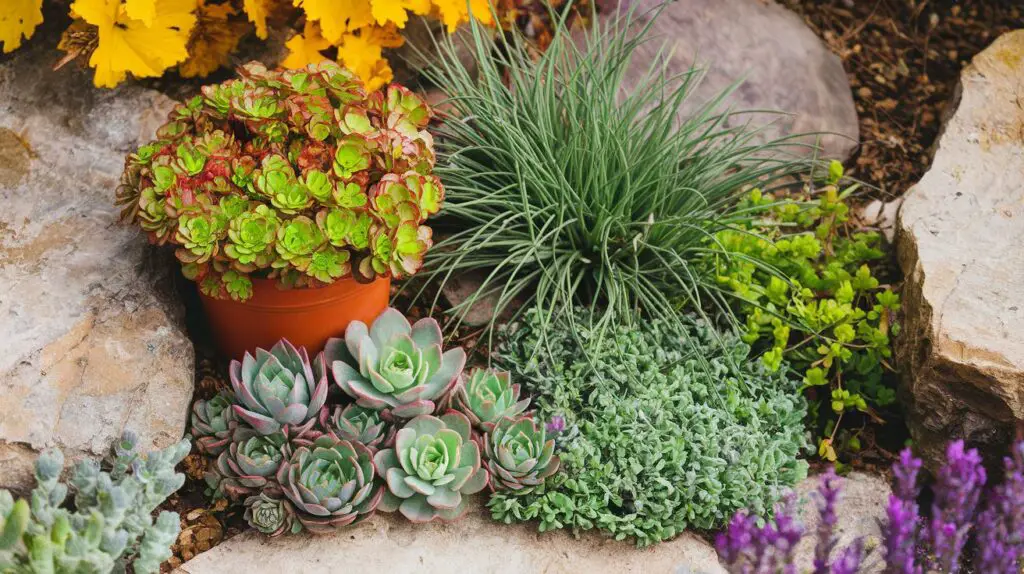
Minimalist Zen Rock Gardens
Minimalist Zen rock gardens are all about peace. The principles behind these designs focus on simplicity. And tranquility. They use rocks, gravel, and minimal planting. Each element has meaning. They aim to create calm, contemplative spaces. Often, they mimic vast natural landscapes in miniature.
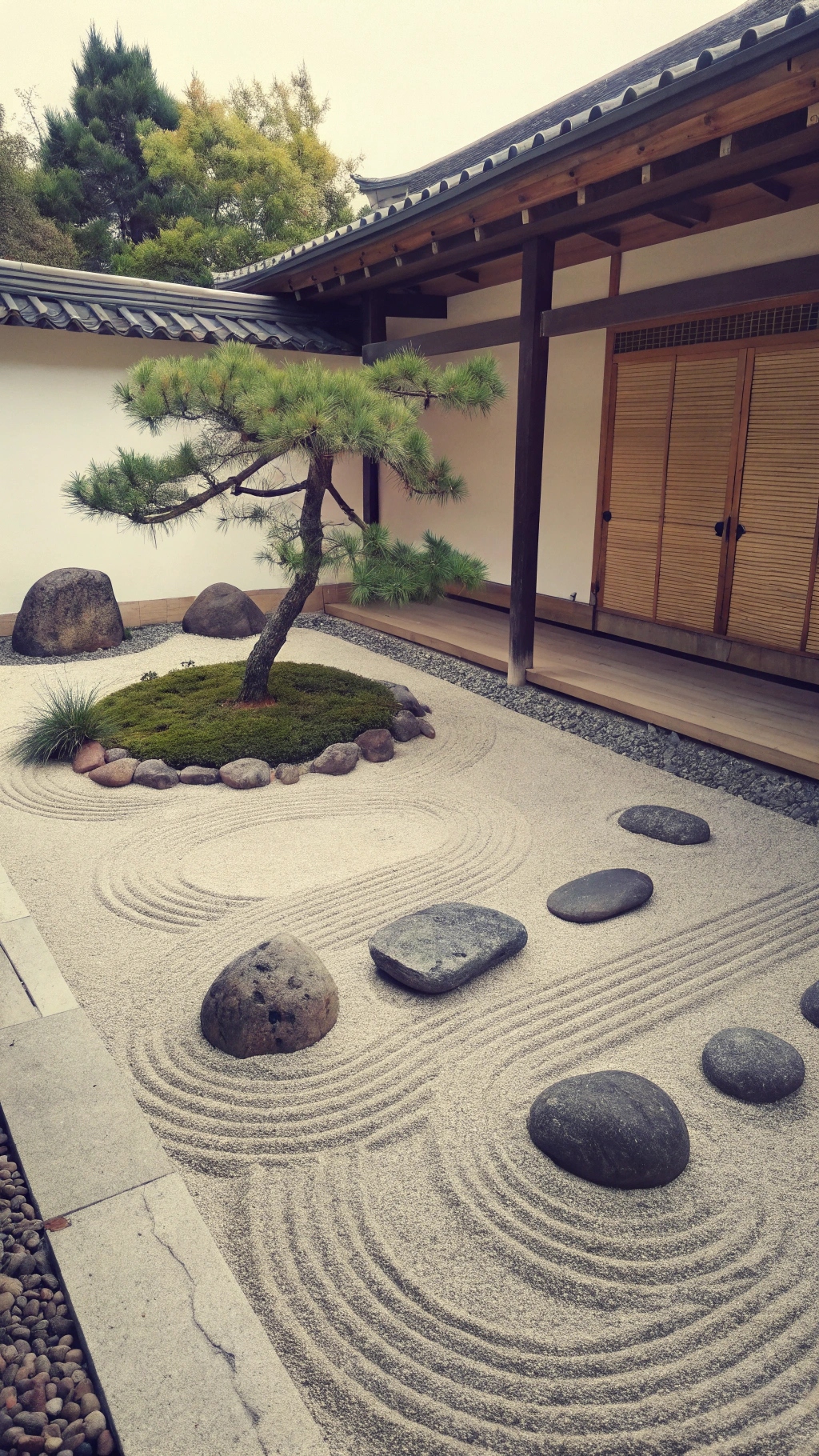
Using rocks to create contemplative spaces is central to Zen design. Large, an_choring stones might represent mountains. Raked gravel often symbolizes water. The emptiness is as important as the objects. These gardens invite quiet reflection. They are not meant for active play.
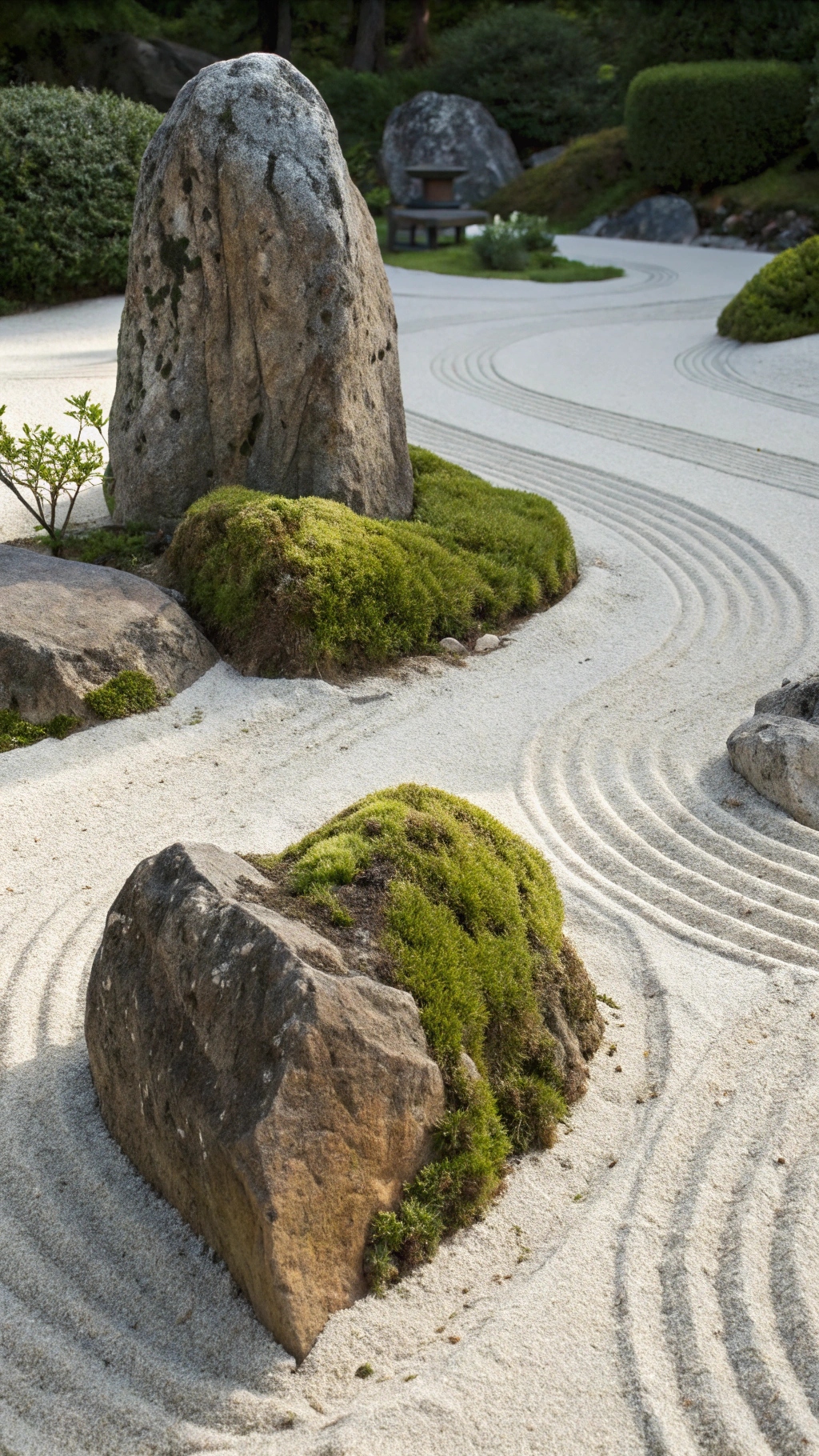
Plants and decorative gravel suggestions are key. Moss is highly valued. So are small, sculpted pines or maples. Bamboo can create a screen. But choose clumping varieties. Gravel is usually fine and in muted tones – grey, white, or beige. Avoid bright colors. Simplicity reigns.

Rock Gardens with a Modern Edge
Rock gardens with a modern edge offer a sleek look. Integrating geometric patterns or symmetrical layouts creates this feel. Think clean lines. And bold shapes. This style is often quite formal. But it can also be playful. It suits contemporary architecture very well.
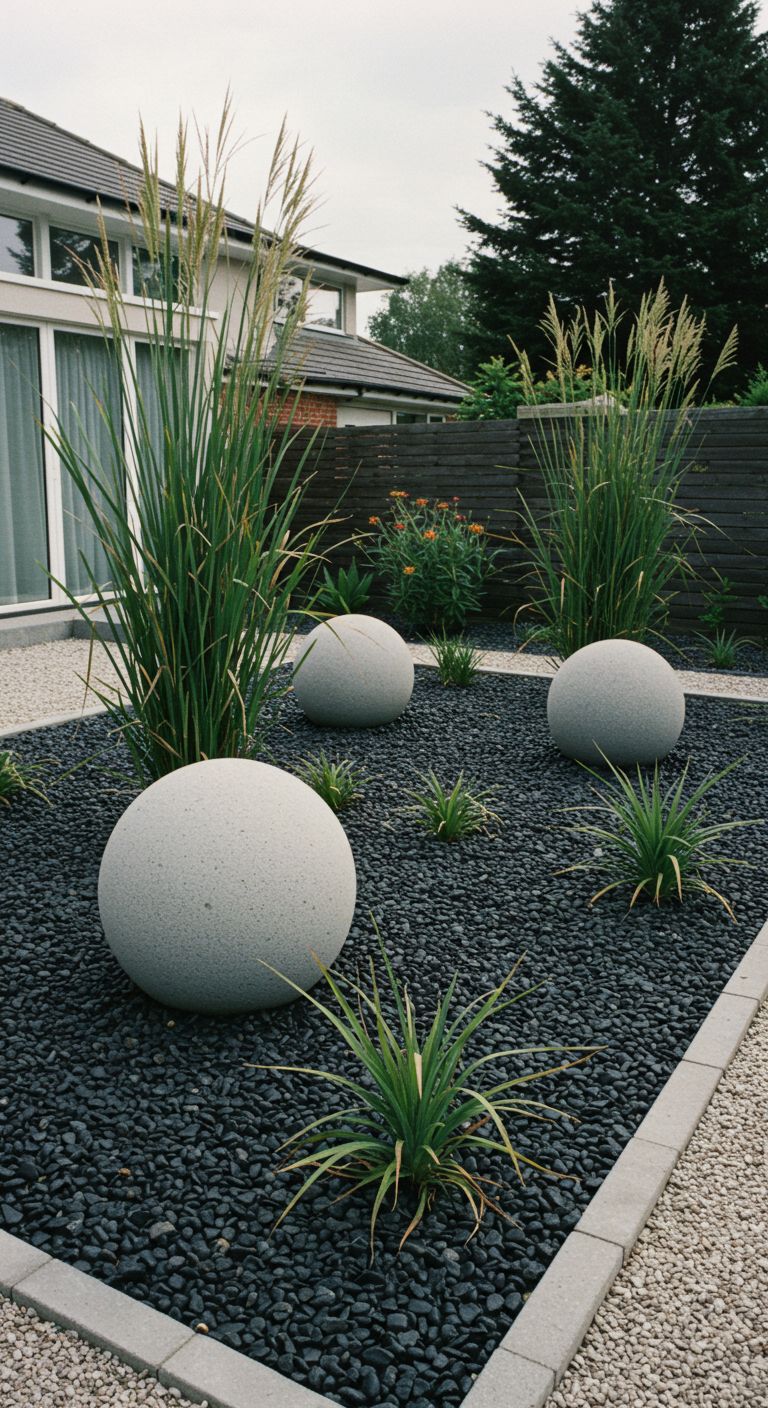
Using smooth, sculptural rocks contributes to a contemporary aesthetic. Polished river stones work well. So do sawn or cut rocks with sharp edges. Concrete elements, like spheres or cubes, can also be used. The idea is to create a sense of order. And sophistication.
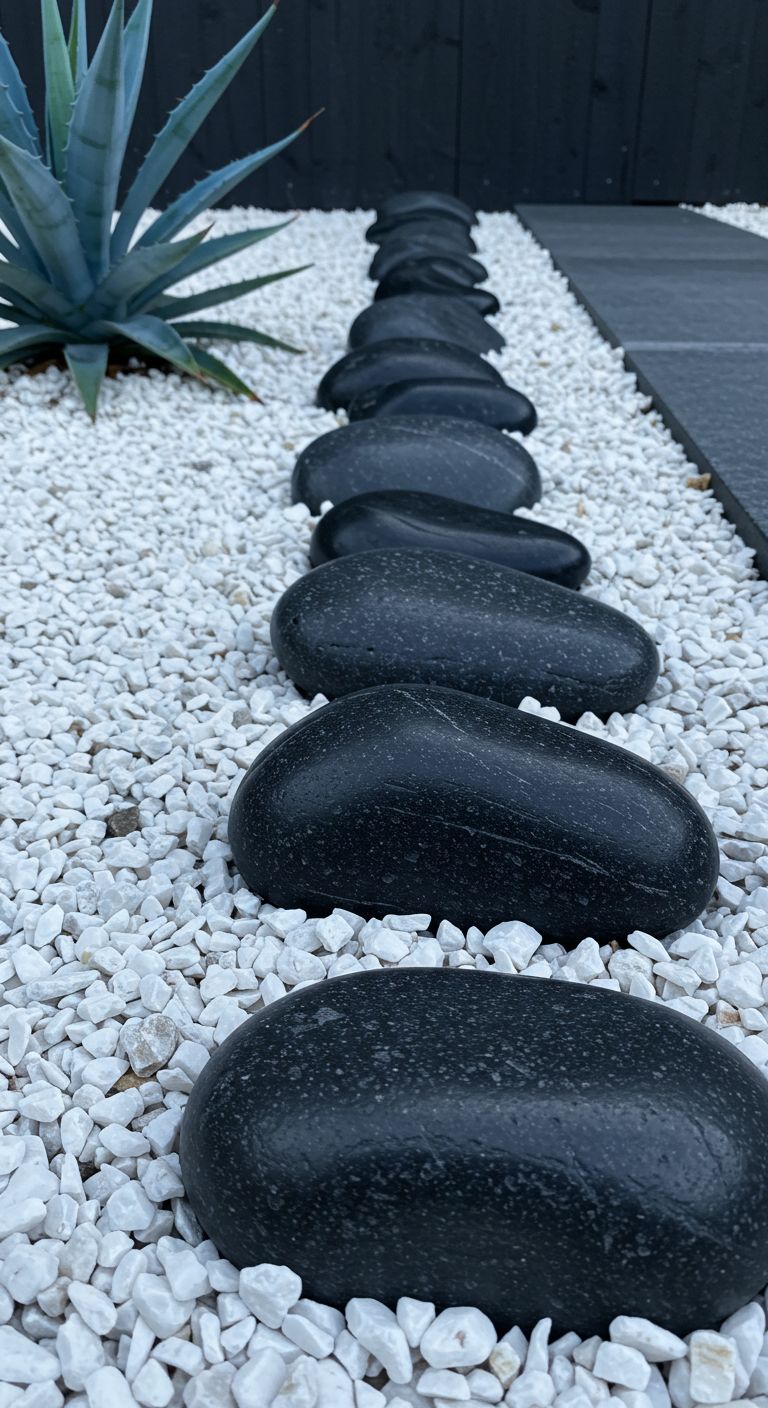
Modern plant selections for sleek, clean looks are important. Choose plants with strong forms. Architectural plants like agaves or yuccas are ideal. Ornamental grasses with upright habits fit well. For color, use it sparingly. Monochromatic schemes, or bold blocks of a single color, work best.
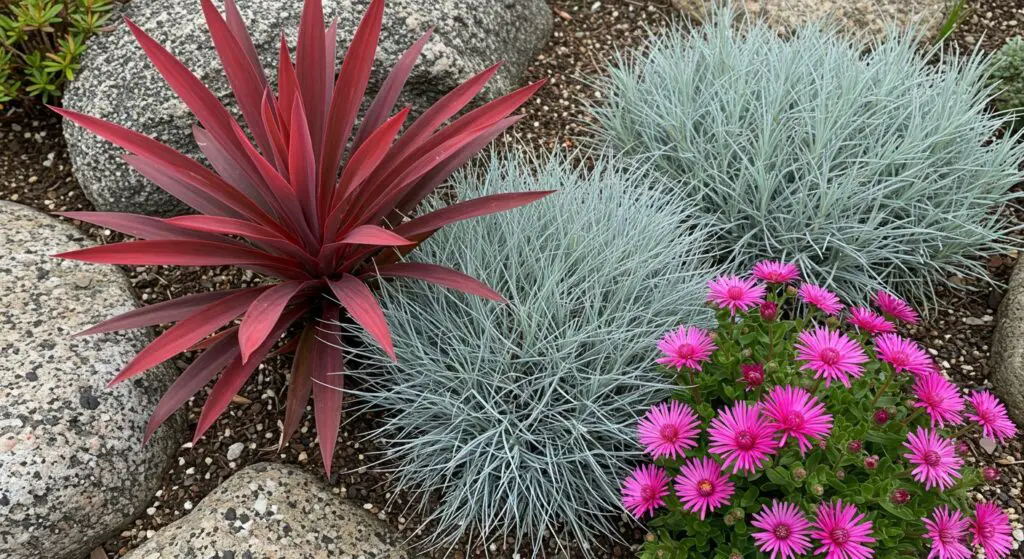
Small but Stylish: Simple Rock Garden Ideas for Compact Spaces
Got a tiny yard? No problem. Even small areas can host beautiful rock gardens. Compact spaces just require clever thinking. You can create something amazing on a patio. Or in a little courtyard. The key is smart design.
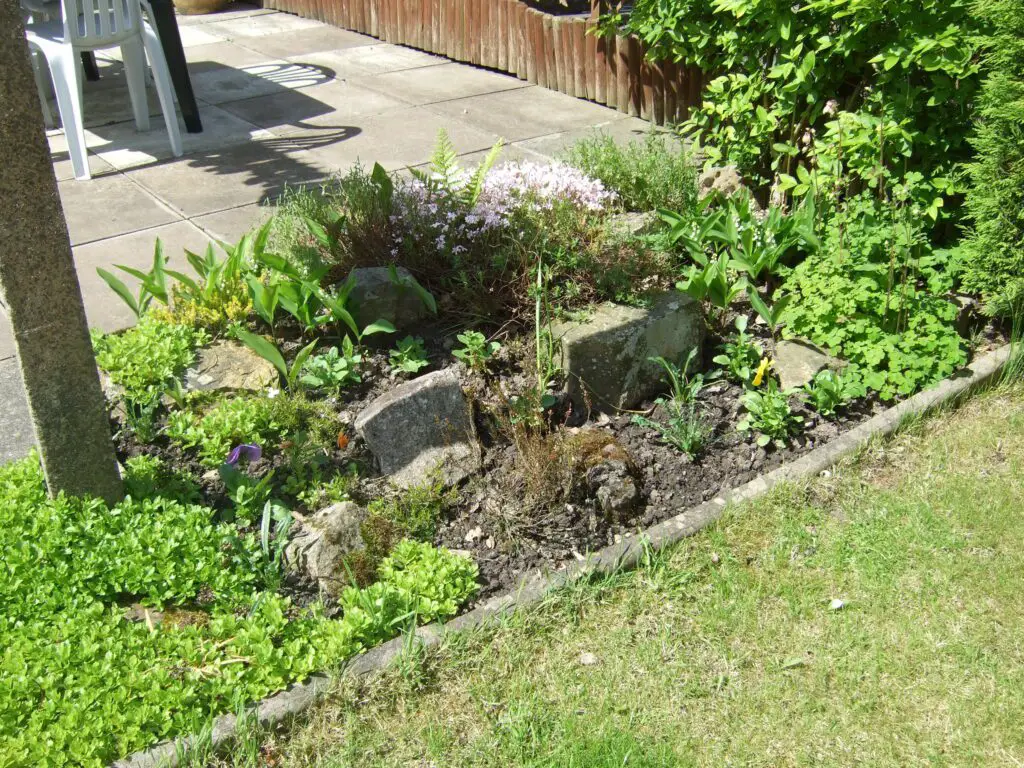
Making the most of small outdoor areas
Think vertical. Walls or fences can support tiered planters. Or use hanging baskets with trailing rock garden plants. Container rock gardens are fantastic for small spots. A collection of pots, each a mini-rockscape, can be very effective. And you can move them around. Maximize every inch.
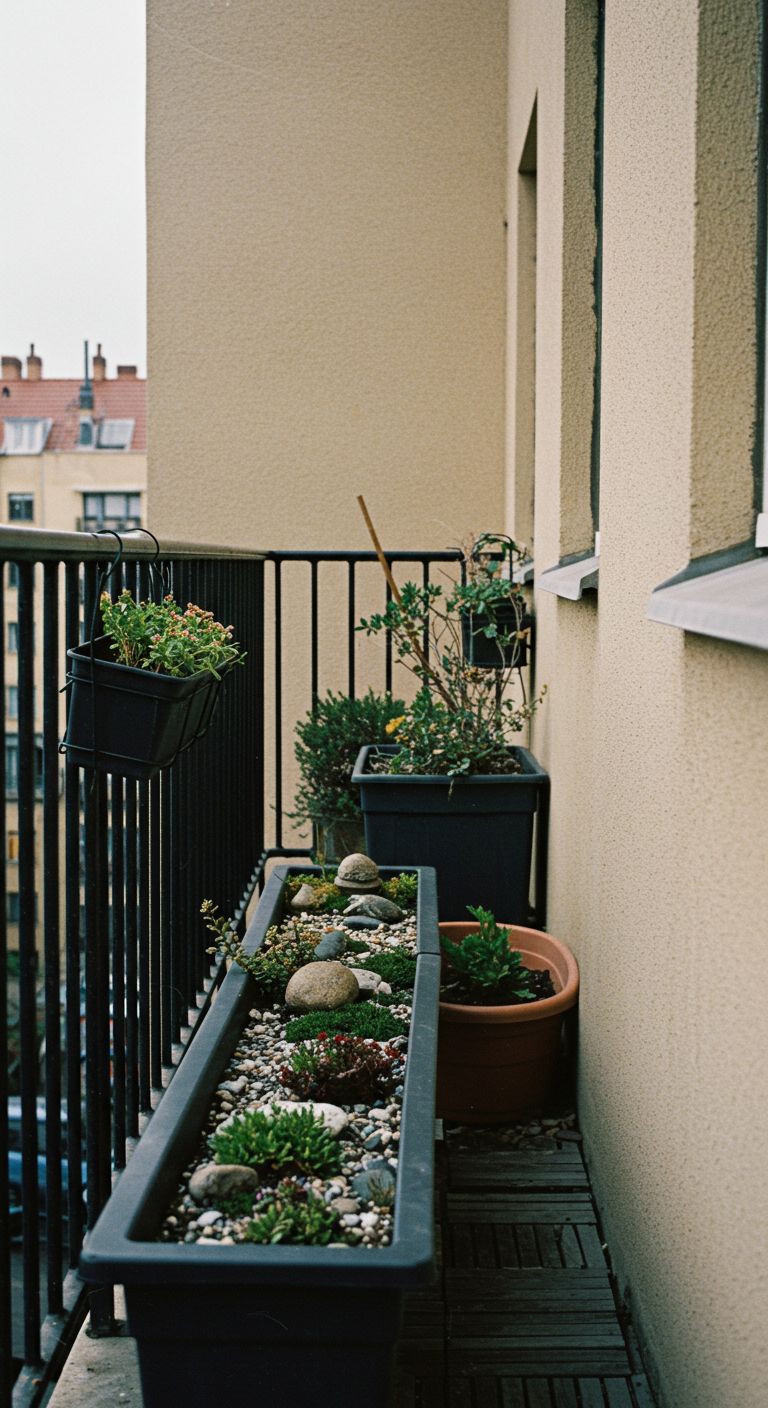
Easy-to-implement rock garden designs
For patios or courtyards, keep designs simple. A single large, interesting rock in a gravel bed can be stunning. Or create a small raised bed using a few rocks as edging. Trough gardens are perfect. These shallow containers mimic alpine conditions. And they look great. Focus on one or two focal points.
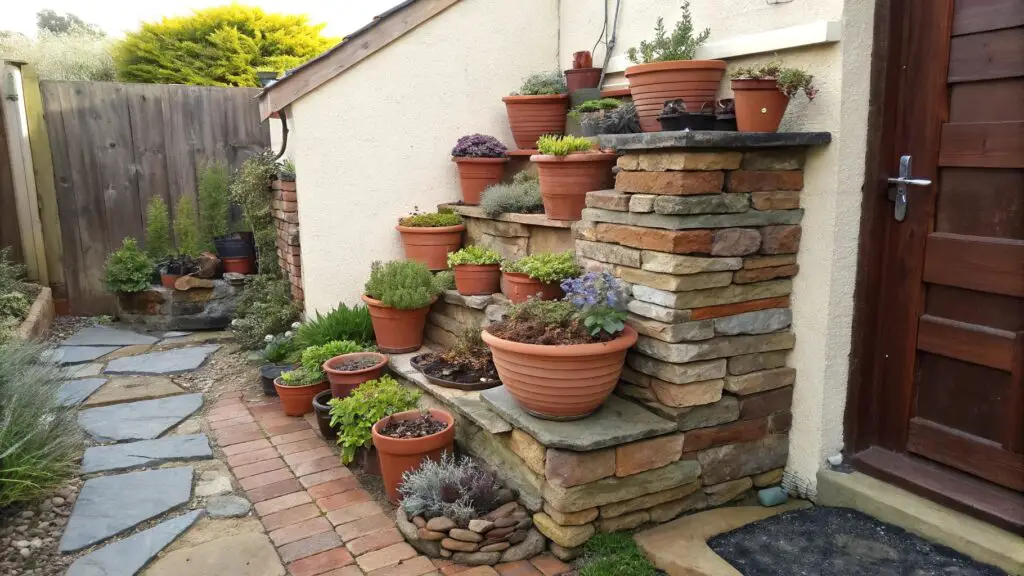
Selecting small-scale plants and rocks
Achieving balance and harmony in tiny gardens is crucial. Choose small-scale plants. Alpine varieties are often naturally compact. Miniature hostas, dwarf irises, and small sedums work well. Select smaller rocks and pebbles. Large boulders will overwhelm a small space. Proportion is everything. Aim for a delicate, jewel-box effect.
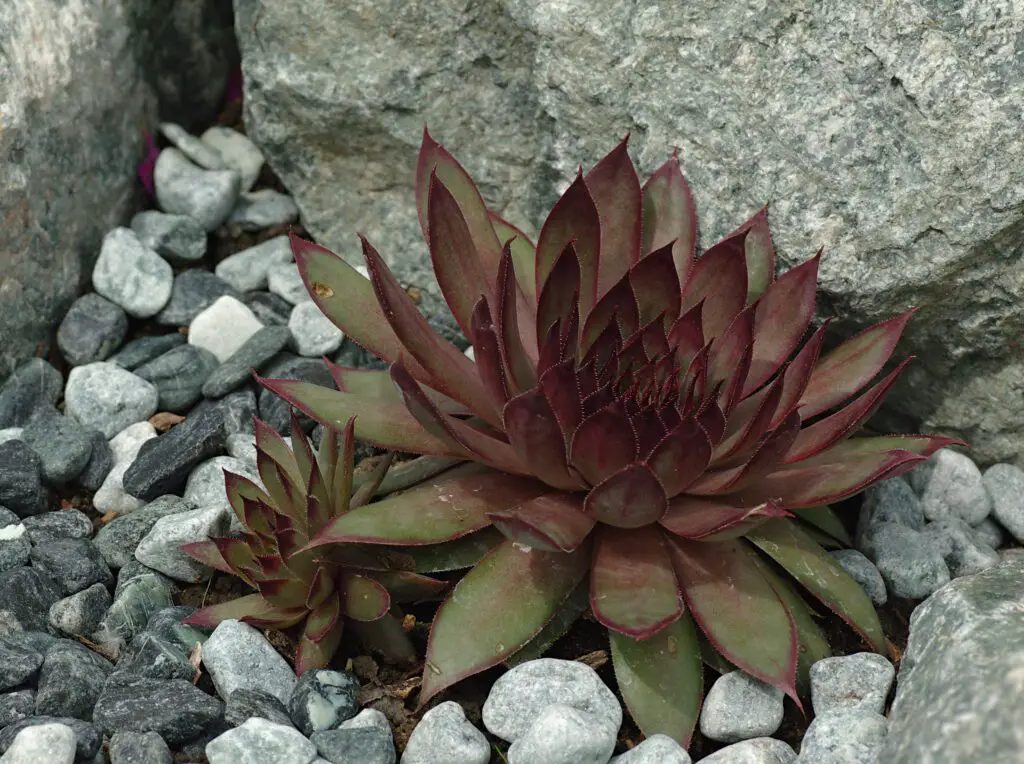
Budget-Friendly Rock Garden Designs
A stunning rock garden doesn’t need to break the bank. Many ways exist to create beauty on a budget. Smart choices make all the difference. You can achieve a high-end look without high-end costs. Resourcefulness is your best friend.
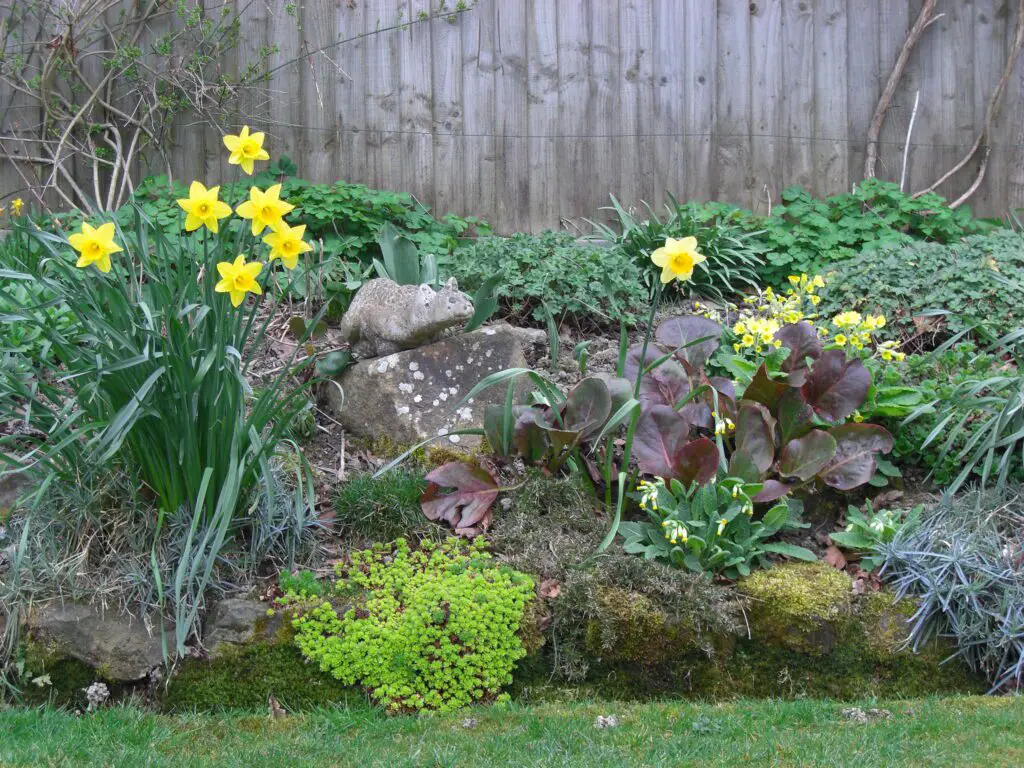
Cost-saving tips for sourcing rocks
Get creative when sourcing rocks. Reuse and recycling are great options. Old bricks or broken concrete pieces can be used. Turn the smooth, manufactured edges inward or bury them. Ask at local construction sites; sometimes they give away excavated rocks. Explore local online marketplaces. People often offer free stones if you can haul them. Local sourcing from fields (with permission!) can also yield free materials.
Simple and affordable DIY rock garden projects
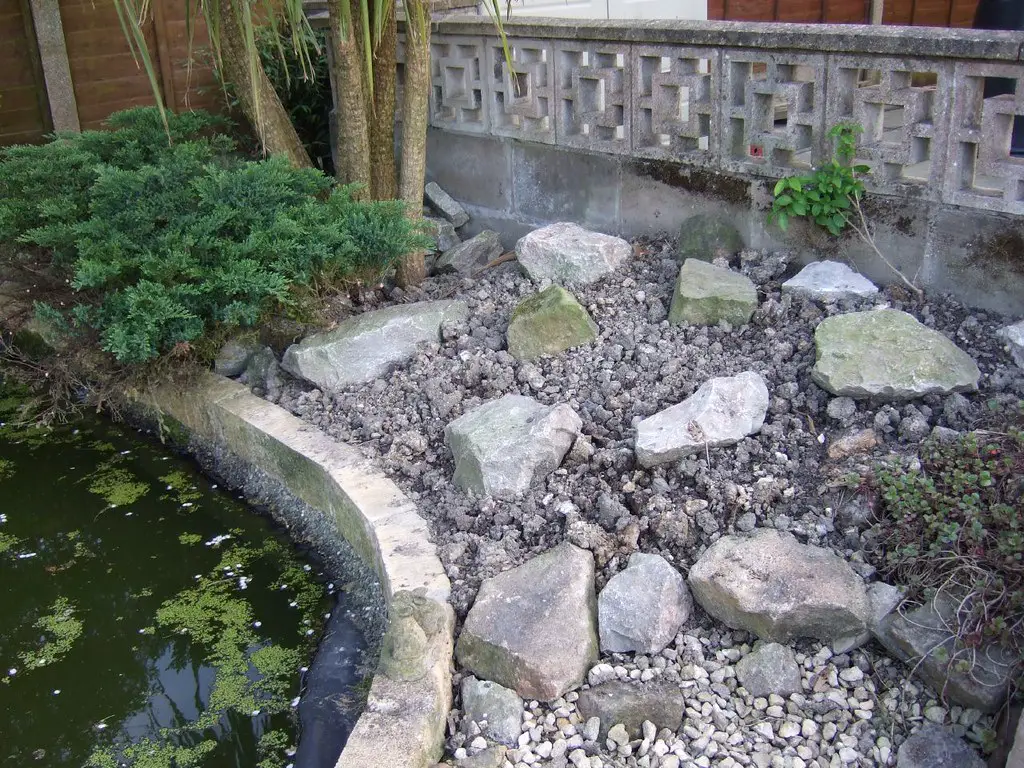
Keep projects simple for affordability. A small DIY rock garden berm is easy. Pile up some soil. Arrange your budget-friendly rocks on and around it. Plant with seeds or small starter plants. Edge a flower bed with smaller stones. Or create a gravel path with rock borders. Start small. You can always add more later.
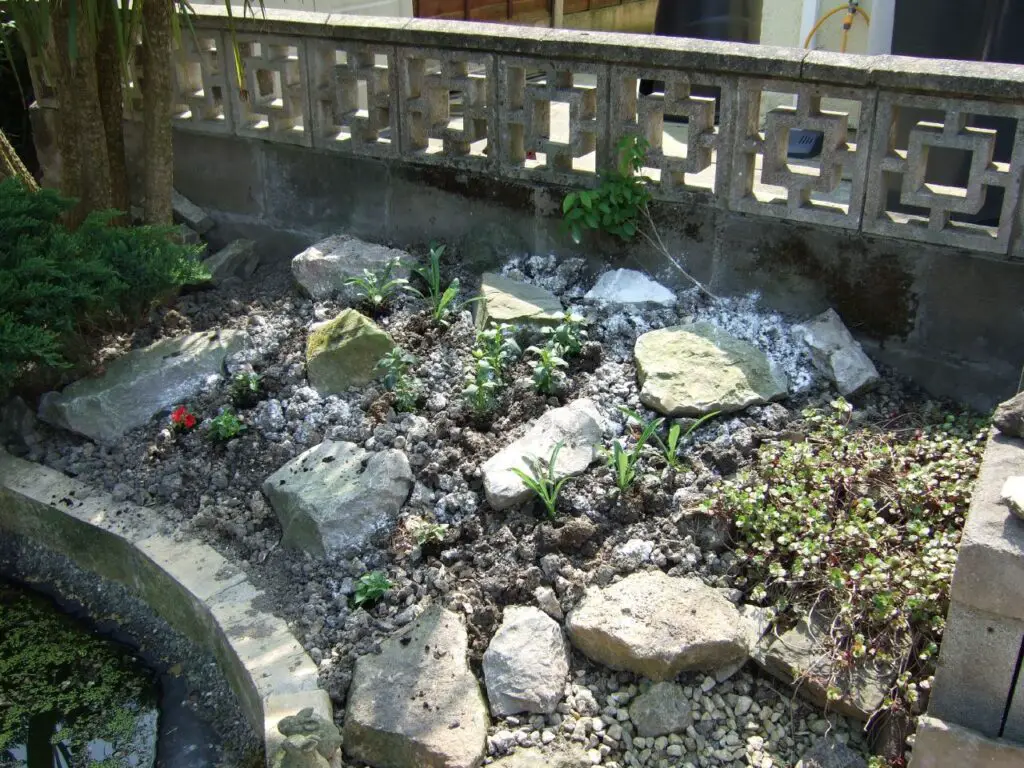
Low-cost plant recommendations
Many low-cost plants are ideal for rock gardens. Sedums and sempervivums multiply quickly. You can often get starts from friends. Creeping thyme is tough and spreads well. Many ornamental grasses are easy to grow from seed. Look for native plants; they are adapted to your climate. And they often require less care. End-of-season sales at nurseries are also great for bargains.
Practical Tips for Maintaining Your Rock Garden
Rock gardens are famously low maintenance. But “low” doesn’t mean “no.” A little regular care keeps them looking their best. And ensures your plants stay healthy. These tips make it easy.
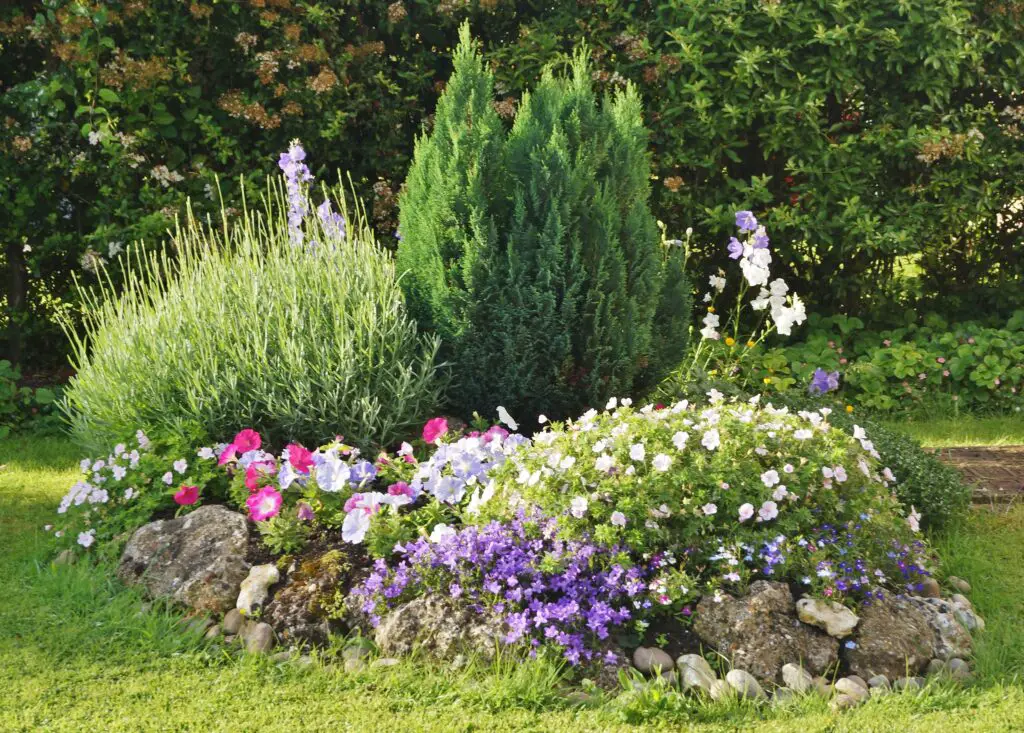
Easy maintenance routines
Keep routines simple. Regularly walk through your garden. Remove any fallen leaves or debris. Check that rocks are stable, especially after heavy rain or frost. Straighten any leaning plants. A quick tidy-up every week or two is often all that’s needed. Deadheading spent flowers encourages more blooms. And it keeps things neat.
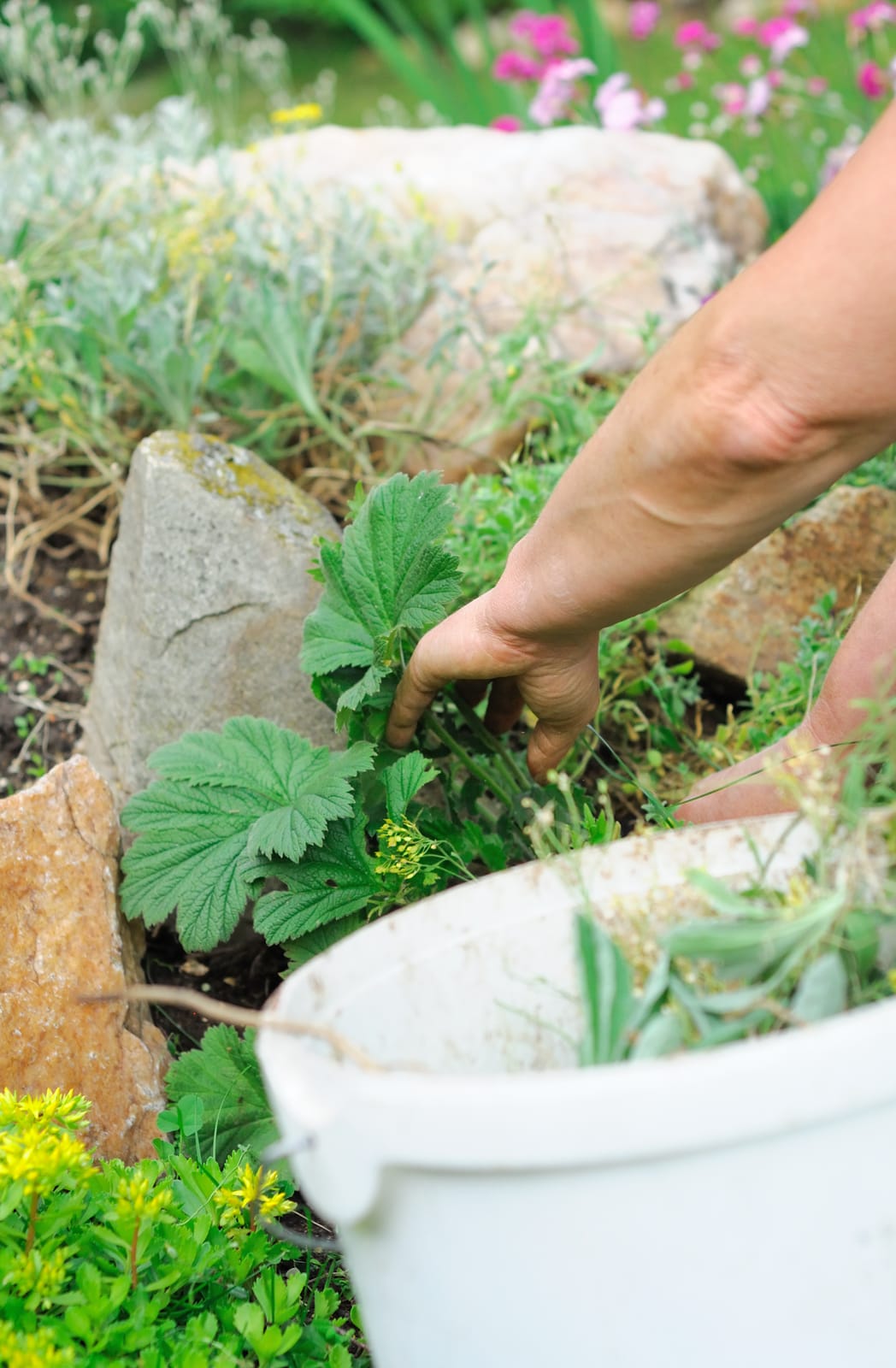
Weed control methods
Weed control is important. Weeds can quickly spoil the look. A thick layer of gravel mulch is your first defense. It blocks light, preventing many weeds from sprouting. Hand-pull any weeds that do appear. Try to get them when they are small. And before they set seed. Avoid using harsh chemical weed killers. These can harm your delicate rock garden plants.
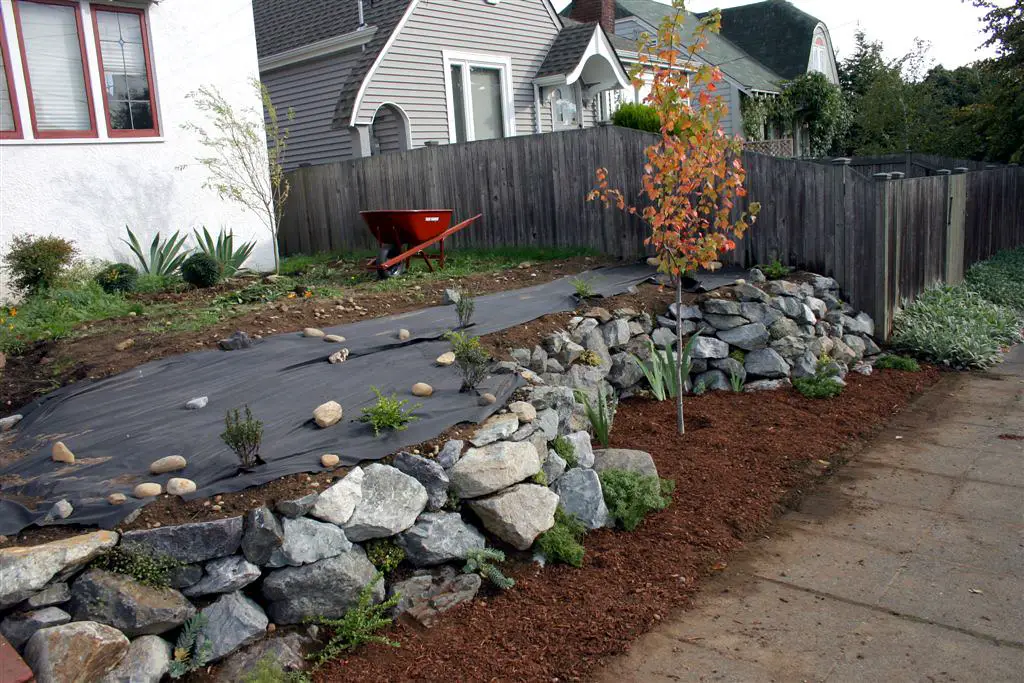
Seasonal tips for preserving aesthetics
Your rock garden changes with the seasons. In spring, refresh mulch if needed. Check for frost heave that may have dislodged small plants or rocks. During summer, some plants might need occasional water in very dry spells. Especially new plantings. In fall, cut back any perennials that die down. A light layer of evergreen boughs can protect tender alpines in harsh winter climates.
Common Mistakes to Avoid in Rock Garden Design
Creating a rock garden is fun. But a few common slip-ups can happen. Knowing these helps you avoid them. Your garden will thank you.
One frequent issue is overcrowding with too many elements. It’s tempting to pack everything in. But too many rocks, or too many plants, can look messy. Not peaceful. Plants need space to grow. Rocks need space to be seen. Give your features room to breathe. Less is often more in rock garden design.
Another pitfall is neglecting drainage considerations. Most rock garden plants hate wet feet. Many come from mountainous regions. They are used to sharp drainage. If water sits around their roots, they can rot. Ensure your soil drains well. Adding grit or coarse sand to your planting mix helps. Raised beds or slopes naturally improve drainage too.
Finally, be careful about choosing incompatible plant species. Not all plants play nicely together. Some need full sun. Others prefer shade. Some like dry soil; others need more moisture. Planting them side-by-side means one group will suffer. Also, be wary of overly aggressive plants. They can quickly smother more delicate alpines. Research your plants before you buy.
Final Thoughts
Thoughtful rock garden design truly can transform your outdoor spaces. It’s amazing what rocks and plants can do. They create beauty. They add character. And they connect us to the natural world.
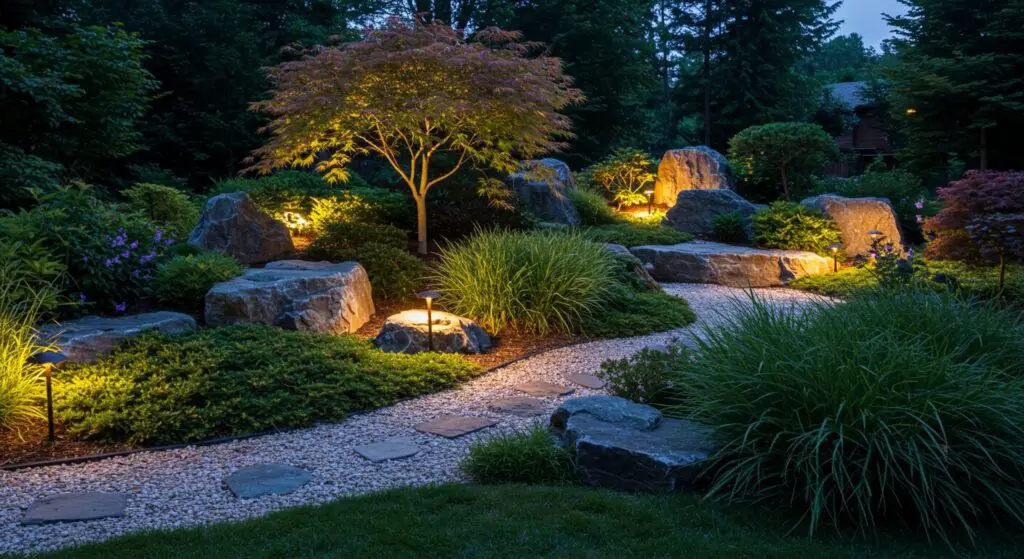
Don’t be afraid to personalize your rock garden. Let it reflect your style. And suit your landscape’s specific needs. Whether you love a wild, natural look. Or a sleek, modern vibe. Your garden is your canvas.
We encourage you to experiment. Especially with large-scale rock designs. They can create lasting impact. And bring enduring beauty to your yard. The possibilities are vast.
The transformative potential of rock gardens is immense. They can turn a boring slope into a feature. An unused corner into a peaceful retreat. A flat yard into a dynamic landscape.
Keep exploring. Look at other landscape design concepts. Continuous inspiration is out there. Your garden journey is always evolving. Enjoy the process. Enjoy your rocks.
